

Sailing Signals: Nautical Lights, Shapes, & Sounds
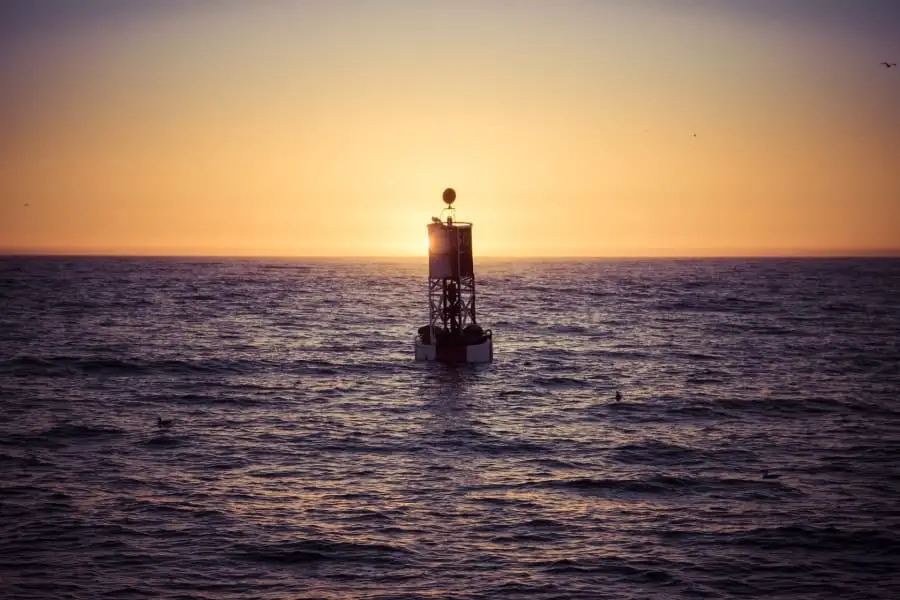
You might be wondering what all those lights, shapes, and sounds that are either attached to a vessel or emanating from them.
While it might not be obvious what these mysterious modes of communication mean, they play a very important role in ensuring the safety and proper communication between vessels and non-vessels alike.
Sailing safety has a lot to do with proper preparedness, which means having the right gear , plan, experience, and mindset. However, sailing safety also requires knowledge in the various forms of communication between vessels and non-vessels. This is where lights, shapes, and sounds play a big role.
By using various lights, shapes, and sounds when out on the water, vessels and non-vessels are able to communicate whether there’s danger afoot, they need help, or simply telling you to get out of the way.
We’ll explore the most common and vitally important light, shape, and sound signals to make sure you’re able to pick up and recognize them when the time is right.
Vessel Lights
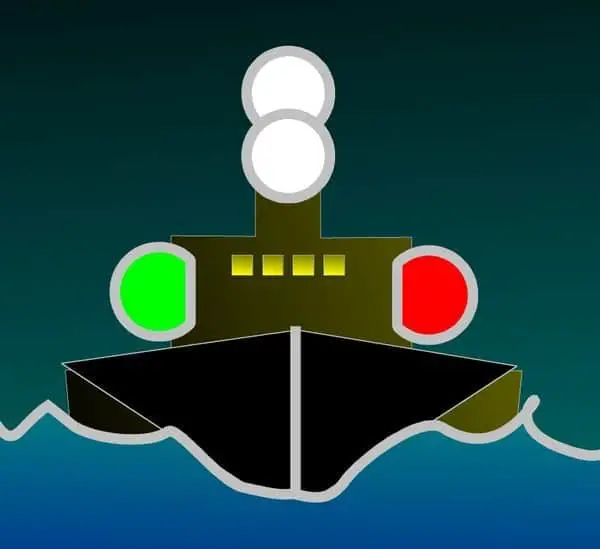
Whenever you see a vessel that has their lights on display, it’s most likely going to be during the evening when it matters most.
The combination of colors and how they’re oriented can mean a world of difference in terms of what they’re trying to communicate, so it’s important to keep an eye out.
The color of lights you’ll see when out on the water include white, red, green, and yellow. Again, you’ll see these on display at night when visual communication between vessels and non-vessels is crucial.
When you see lights on display, you’re essentially being told the vessel’s direction of movement, method of propulsion, and size.
Apart from the basic message of direction, propulsion method, and size, there are other light signals that are there to inform you of other situations. Some of those situations include when a vessel is
- Not under command
- Constrained by draft
- Unable to maneuver
The most important determination, when confronted with a vessel or non-vessel at night, is whether or not there’s a risk of collision.
Obviously, if there’s a risk of collision you need to attempt to communicate with the vessel immediately and to take proper action to avoid a collision. Ideally, you’ll be able to communicate with the other vessel so that you’re both in agreement about who does what to prevent a potential collision.
Basic Lights
As I mentioned previously, there are several basic colors that you’ll see on display from a vessel at night.
However, these lights can be displayed in different ways in terms of position on a vessel as well as how they’re displayed (e.g., blinking or static). Here are some basic definitions of lights that you should know.
Masthead Light
The masthead light is a static white light that sits partway up the main mast of a vessel and only displays to the front 225 degrees of the vessel.
This means that other vessels coming toward yours at an arc of 225 degrees will see an unbroken white light, which will inform them that you are possible head-on.
The sidelights are a pair of static lights that sit fore of the vessel at the bow with one being on the port side and the other on the starboard side.
The light on the port side is a static red light and the light on the starboard side is static green. The combination of both lights covers the same amount of arc as the masthead light, which is 225 degrees.
The sternlight is a static white light that sits as far back as possible aft the vessel at the stern and displays to the back 135 degrees of the vessel.
Other vessels who see this will know that they’re behind your vessel due to the light being lower than if they saw the masthead light and not being able to see the sidelights.
All-Round Light
The all-round light is a static white light that sits at the very top of a vessel’s mast and displays at a full 360-degree angle. You’ll see this light being displayed on a sailboat that’s either docked or at anchor.
Towing Light
The towing light is a static yellow light that sits at the same position as the sternlight and displays at an arc of 135 degrees aft the vessel. As the name suggests, this light indicates to other vessels that it’s currently towing an object.
Underway Vessels
When vessels are on the move and it’s dark out, there’s no doubt that being able to pick out fellow vessels is an important way to avoid any risk of collision .
In all likeliness, you’ll be able to pinpoint another vessel rather quickly at night be observing their lights and determine their position, direction of movement, and size.
Sailing Vessels
When spotting sailing vessels underway at night, you’ll be able to see at a bare minimum their sidelights and sternlight.
By observing which lights you can see and their orientation, you can quickly determine the position at which you’re viewing their vessel. However, depending on the size of the vessel, you’ll definitely see a different combination of lights.
If your vessel is less than 20 meters (65 feet) in length, then all you’ll need to display are the sidelights and sternlights when underway at night.
However, it’s also possible to display a similar set of lights in a different way indicating the same underway conditions, which is when you might see on the very top of the mast a 3-light combination — red, white, and green.
The 3-light combo displays at the same angles as the sidelights and sternlight. The only difference here is they’re situated at the top of the mast.
Sailing vessels underway that are larger than 20 meters will likely have a different set of lights on display, but the difference is huge.
With larger sailing vessels, you’ll still see the sidelights and sternlight with another pair of static lights near the top of the mast where the top light is red and the one below is green.
Power-Driven Vessels
Now, power-driven vessels are bit different when underway at night compared to sailing vessels. For one, a power-driven vessel can be as small or much larger than a sailing vessel, so the number of lights can vary quite a bit.
Also, a power-driven vessel is capable of much greater speeds than a sailing vessel, so ensuring other vessels are aware of their existence at night is very important.
Not unlike a sailing vessel, a power-driven vessel will also have a pair of sidelights and one sternlight. However, there’s an additional light that’s included in this combination and that being the white masthead light.
This 4-light combination will help other vessels like yours be aware that a 15 meter (50 feet) power-driven vessel is underway near them.
But what about the power-driven vessels that are well above the 15-meter size?
Well, the power-driven vessels that are much larger will have the same lights as the smaller power-driven vessel as well as a white static light at the bow that’s slightly lower in height than the masthead light.
This helps other vessels like yours get an idea of just how big this power-driven vessel really is.
Vessels At Anchor
Whenever you’re underway at night, there’s no doubt you want to be aware of other vessels underway to avoid a major collision .
But it’s also the case that you want to be able to spot those other vessels that are at anchor, especially if you’re moving around a marina or bay with other docked or anchored vessels.
Sailing vessels at anchor are very easy to pick out at night since all they need to have on display is their all-round light.
Remember that the all-round light is a static white light that provides a 360-degree view at the very top of a sailing vessels mast, so it’ll be quite difficult to miss. As a matter of fact, a power-driven vessel at anchor also has the same all-round light on display as long as it’s 50 meters (65 feet) or less in size.
For sailing and power-driven vessels that are greater than 50 meters in size, they have to put on display another all-round light.
However, this extra all-round light is placed near the stern of the vessel and is lower in height compared to the all-round light on the mast. This combination of all-round lights should tell you right away that you’re looking at a much larger vessel at anchor.
If you just so happen to see a vessel that’s greater than 100 meters (328 feet) in size and it’s also at anchor, you best believe you’ll see it lit up like a Christmas tree. When it comes to this size of a vessel, they’re required to put as many lights on display as possible.
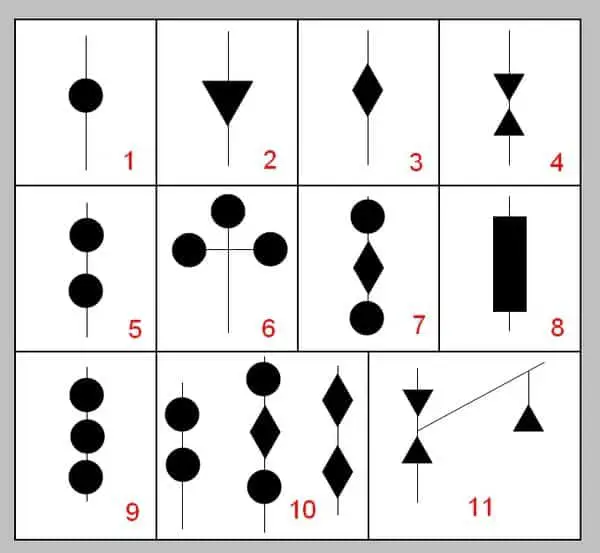
Most of what we’ve covered up to this point has been under the conditions of being underway or at anchor during the evening.
However, arguably more vessels will be out during the day than at night, so it’s important to be aware of other forms of visual communication such as day shapes.
During the day there’s little need for lights to communicate visually to other vessels, which is why we use shapes instead. There are a number of different shapes that take the form of circles, squares, triangles, and more that communicate different messages.
While there are a lot of different day shapes to consider, I want to cover the most common you’ll likely see while out on the water.
Being able to pinpoint a vessel, whether sailing or power-driven, that’s anchored during the day is rather straight forward as you should see a large black sphere hanging between the tip of the vessel’s mast to the fore of the vessel.
This single black sphere should be the size of a basketball and will be attached in the middle of a line.
Motoring and Sailing
If you’re out sailing and have your engine running to help boost your speed, you’ll need to ensure that you have a black, upside-down triangle attached to the middle of your forestay.
Just like the black sphere used to illustrate that your vessel is anchored, your sailboat should have the upside triangle in the same location. It’s important to note that this is only required for vessels that are 12 meters (39 feet) or greater in size.
Diving Operations
If you like to go freediving, scuba diving, or snorkeling, you’ll want to be sure to use the proper diving day shape.
Whether you’re on a small or medium sized vessel, make sure you put up the correct flag at the top of the mast. The most commonly used flag is blue and white while another flag is red with a white slash from one corner to another.
One of the worst situations you can find yourself or anyone else in while out sailing is ending up aground.
If this situation ever occurs, there should be three black spheres, just like the one you would use when anchored out, attached to the top of the mast in a vertical column. It’s important to note that this is only required for vessels that are 12 meters (39 feet) or greater in size.
Not Under Command
There will be times when vessels out on the water won’t be under command, which means you should be aware of this so you can make sure you can avoid them on your course.
Just like a vessel that’s run aground, you should see black spheres lined up vertically at the top of the mast, but instead of three spheres there should only be two. Again, this is only required for vessels that are 12 meters (39 feet) or greater in size.
Restricted Maneuverability
Some vessels can find themselves in situations that simply restrict their ability to maneuver, so being able to put that inability on full display to the rest of the vessels out on the water is rather important.
By putting a black, diamond-shaped object in between two black spheres in a vertical column at the top of the mast, this message is illustrated successfully. Similar to other day shapes, you’ll only find this on vessels that are 12 meters (or 39 feet) or greater in size.
Fishing and Trawling
Fishing is one of the oldest industries in the world and there’s no doubt that you’ll eventually find a vessel fishing and towing along a net.
Whenever a vessel is trawling, you should find two triangle shapes pointing at each other in a vertical column hoisted as high as possible.
There are also a few strange looking flags you’ll find being hoisted in the same location whenever a fishing vessel is either shooting nets, hauling nets, or their nets are caught on the seabed.
Buoys and Marks

Being able to safely navigate around other vessels out on the water is, of course, extremely important, but it’s also important to be observant of non-vessel objects that could get in your sailboat’s way.
Circumventing spots that are potentially dangerous comes first by being able to recognize the various buoys and marks on the water.
There are internationally agreed sets of buoys and marks that ensure safety for traveling vessels all over the world. Thanks to the International Association of Lighthouse Authorities (IALA), we have two major systems to abide by located in two different worldwide regions.
Fortunately, these two regions — Region A and B — have very few impactful differences. Region A (IALA A) covers all of Europe and pretty much the rest of the world while Region B (IALA B) covers the USA, Japan, The Philippines, and Korea.
Major Difference Between IALA A and IALA B
The major difference between the two regions is regarding the buoys which define which side of a channel the vessels should be traveling on.
For example, IALA B has red lights, marks, and/or buoys on the starboard (right) side of a channel when entering a place such as a harbor while under IALA A standards the red lights, marks, and/or buoys are on the port (left) side of a channel when entering.
These are known as lateral or channel marks and define the limits of the water that navigable across a channel.
Port and Starboard Marks
When it comes to buoys and marks that specify the port or starboard side of an object, the port side of an object is red and the starboard side of an object is green.
This is the same for when you’re sailing your boat when it comes to the foremost red and green lights on your vessel.
In regards to specific shapes of port and starboard marks, under the IALA B standards, port marks take the shape of a cone while the starboard marks take the shape of a can.
Safe Water Marks
A Safe Water Mark, also known as a Fairway buoy, is a red and white vertically striped object usually taking the shape of a sphere, pillar, or spar with a red ball on the top for the non-sphere shapes.
This mark usually indicates that you’re entering open and deep waters which should continue as you sail onwards.
Isolated Danger Marks
Having a mark named Isolated Danger Mark isn’t too comforting when you first read it, but it’s one of the most useful marks you’ll find. As the name implies, this mark indicates a location of potential hazard that should be avoided at all costs.
The Isolated Danger Mark should always be red and black horizontal bands with two black balls at the top. It should also have a flashing white light that comes in groups of two flashes.
Special Marks
A Special Mark can carry a number of different meanings, but it’s always displayed in the same way. Special Marks should be completely yellow and have an ‘X’ on the top of it.
A yellow flashing light is also found on the top of the Special Mark and can be seen quite distinctly at night. The reason you could find yourself near a Special Mark is due to it indicating
- Water skiing areas
- Anchorage areas
- Mooring areas
- Waiting areas
- Marine farms
- Historic wrecks
- Protected areas
- Sewerage pipes
- Submarine cables
Cardinal Buoyage System
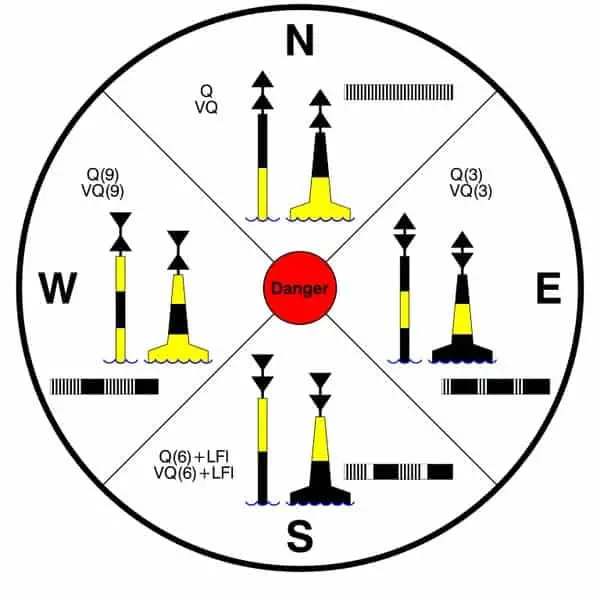
Another useful set of buoys is based on the Cardinal Buoyage System, which was designed to indicate the safe passage around a potentially hazardous area.
These Cardinal Marks are signaling to vessels that there’s an area that’s shallow, contains sunken objects, reefs, rocks, or something else.
By observing the Cardinal Marks, you’ll be able to tell where not to go based on their explicit placement. For example, if you see a North Cardinal Mark, your vessel can safely pass the hazard by traveling North of that marker.
The same goes for South, East, and West Cardinal Marks. Cardinal Marks are always black and yellow horizontally striped pillars.
The North Cardinal Mark is black on the top, yellow on the bottom, has two vertical triangles pointing up, and has a continuously flashing white light on the top.
The South Cardinal Mark is yellow on the top, black on the bottom, has two vertical triangles pointing down, and has a flashing white light on the top that flashes in groups of six followed by one long flash.
The East Cardinal Mark is black with a yellow stripe in the middle, has two vertical triangles pointing outward, and has a flashing white light on the top that flashes in groups of three.
The West Cardinal Mark is yellow with a black stripe in the middle, has two vertical triangles pointing inward, and has a flashing white light on the top that flashes in groups of nine.
Sound Signals
There may be times when you’re out sailing and the visibility is just too poor to be able to point out any buoys, flags, or shapes of any kind. Thankfully, we have light signals that can help us out when it comes to navigation around other vessels and potentially hazardous areas.
However, there may be times when we need to communicate more direct messages much more quickly. If VHF is not an option under these conditions, the use of sound signals is your go-to solution.
“You Are Running into Danger”
There are plenty of useful sound signals to be able to send out as well as recognize when the moment’s right, but there’s one that everyone should be aware of.
When someone yells “heads up!”, it’s likely you’re going to cover your head as soon as possible. When out on the water, the “heads up” can come in the form of two distinct sounds.
When someone is attempting to warn you that “you are running into danger” or you need to inform another vessel of this, you’ll need to know the Morse code word for ‘U’.
The word ‘U’ is presented as a one-second horn blast followed by a 4-6 second horn blast. You can think of this as a short blast followed by a long blast.
In all likeliness, you’ll be the one hearing this sound signal as opposed to you sending it out. Most of the time when this sound signal is used, it’s coming from much larger vessels such as oil rigs, cruise ships, and other vessels of similar size.
Poor Visibility Sound Signals
There are a few sound signals that you should keep in mind when visibility becomes poor while out on the water. Some of the most important include:
- Power underway, making way: one 4-6 second blast and a 2-minute wait.
- Power underway, not making way: two 4-6 second blasts and a 2-minute wait.
- V essel sailing, fishing, not under command, towing, maneuverability restricted: one 4-6 second blast, two 1 second blasts, and a 2-minute wait.
- Last manned vessel of tow: one 4-6 second blast, three 1 second blasts, and a 2-minute wait.
- Warning from vessel at anchor: one 1 second blast, one 4-6 second blast, and one 1 second blast.
- Plot vessel on duty: four 1 second blasts.
- Vessel at anchor: 5 seconds of rapid bell ringing and a 1-minute wait.
- Vessel aground: 3 short bell rings, 5 seconds of rapid bell ringing, and 3 short bell rings.
Maneuvering and Warning Sound Signals
If you ever find yourself communicating with another vessel using sound signals, you’ll definitely need to confirm with one another who’s going to do what so as to avoid the risk of a collision.
Here are some of the most important sound signals you can use to communicate with other vessels.
- I’m altering course to starboard: one 1 second blast.
- I’m altering course to port: two 1 second blasts.
- I’m operating stern propulsion: three 1 second blasts.
- I don’t understand your intentions! I doubt you’re taking sufficient action to avoid collision: five or more 1-second blasts.
- I intend to overtake on your starboard side: two 4-6 second blasts and one 1 second blast.
- I intend to overtake on your port side: two 4-6 second blasts and two 1 second blasts.
- Agreement by overtaken vessel: one 4-6 second blast, one 1 second blast, one 4-6 second blast, and one 1 second blast.
- Approaching blind bend in channel: one 4-6 second blast.
- Reply from vessel on other side of bend: one 4-6 second blast.
Get the very best sailing stuff straight to your inbox
Nomadic sailing.
At Nomadic Sailing, we're all about helping the community learn all there is to know about sailing. From learning how to sail to popular and lesser-known destinations to essential sailing gear and more.
Quick Links
Business address.
1200 Fourth Street #1141 Key West, FL 33040 United States
Copyright © 2024 Nomadic Sailing. All rights reserved. Nomadic Sailing is a participant in the Amazon Services LLC Associates Program, an affiliate advertising program designed to provide a means to earn fees by linking to Amazon.com and affiliated sites.
What 18 Symbols On Your Car’s Dashboard Mean
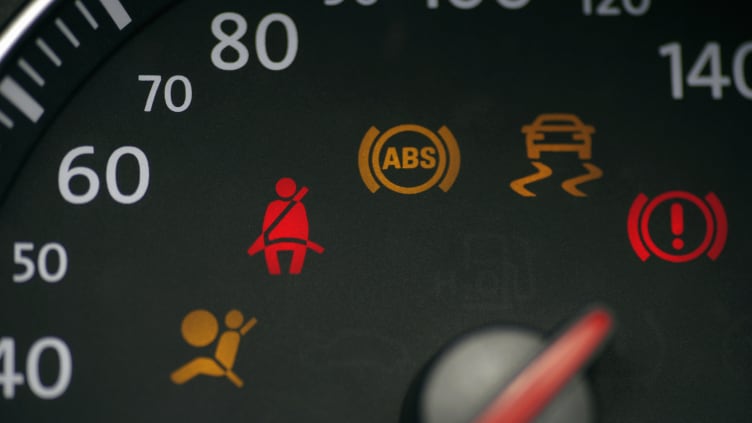
When something goes wrong with your car , or if a feature you should know about gets activated, a signal funnels through the electrical system and into the dashboard. This illuminates a symbol on the dash, and these cover a wide range of issues—some of which may be serious. Here are the meanings behind 18 of these curious-looking markers (and what they look like, in case you need a reminder.)
Your dashboard may be different and the symbols may have altered designs or indicate slightly different things, so be sure to consult your owner’s manual. Some of these lights could portend a serious malfunction . Don’t ignore them. When in doubt, have a professional check it out.
Table Of Contents
1. engine temperature warning light, 2. tire pressure warning light, 3. oil pressure warning, 4. traction control, 5. engine warning, 6. anti-lock brake warning, 7. rear window defrost light, 8. battery alert, 9. fuel indicator symbol, 10. seatbelt reminder light, 11. airbag indicator, 12. fog lamp indicator, 13. air suspension warning, 14. lane departure warning, 15. washer fluid indicator, 16. cruise control indicator, 17. lamp out warning, 18. brake pad warning.
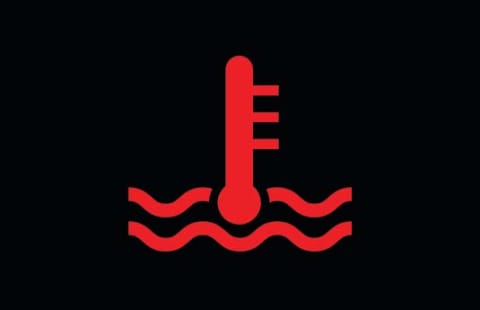
What it looks like: A pirate ship with its sails down as if to say, “I’m just a normal boat, no pirates here.”
What it means: Your engine is too hot, friend. Here is a useful guide for what to do if your engine overheats.
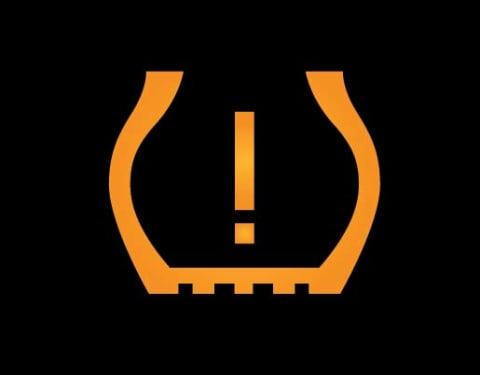
What it looks like: A Buckingham Palace guard telling you the field goal is good !
What it means: The pressure in one or more of your tires is too low and needs to be attended to.
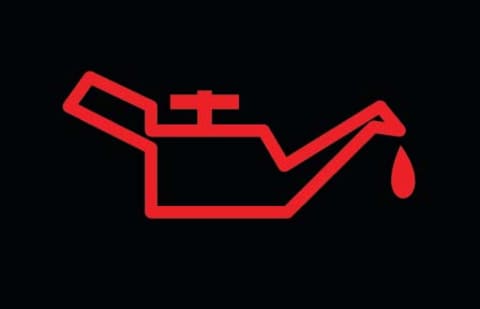
What it looks like: You’re about to get three wishes.
What it means: Your engine is running low on oil, or there is a problem with your car’s oil pressure system.
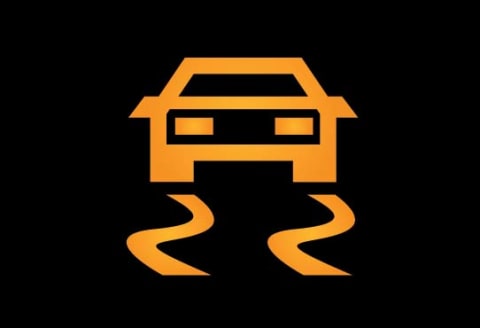
What it looks like: Cthulhu wearing a fedora.
What it means: The car’s traction control system is engaged.
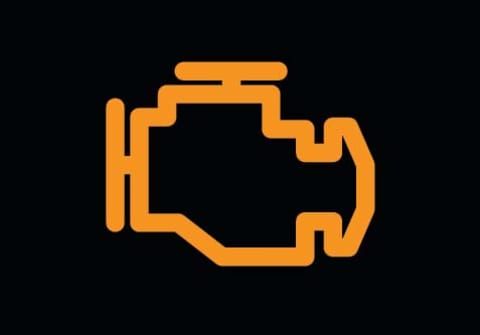
What it looks like: Yellow submarine, a yellow submarine, a yellow submarine.
What it means: It can blink on to warn you of a number of issues , from minor (a loose gas cap) to major (wiring problems).
More Articles About Cars:
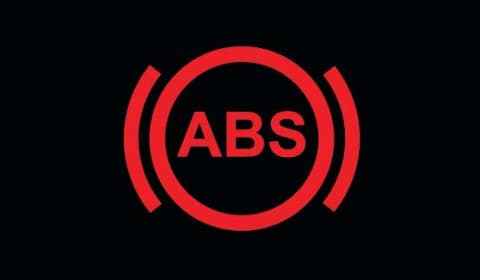
What it looks like: The cover of a fitness magazine.
What it means: There is an issue with your anti-lock brake system that needs to be diagnosed and fixed.
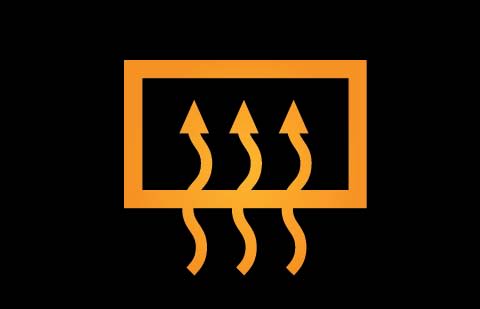
What it looks like: An aerial view of snakes slithering through windows into your house.
What it means: The rear-window defroster is engaged, so any condensation should clear up in a jiffy.
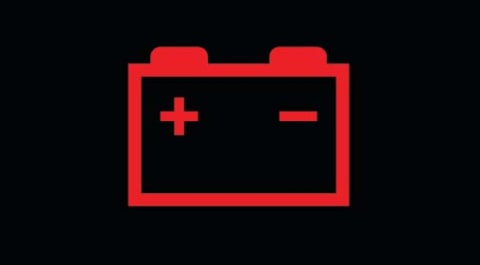
What it looks like: Math LEGO .
What it means: The car’s charging system is short of power. You are running solely off the battery.
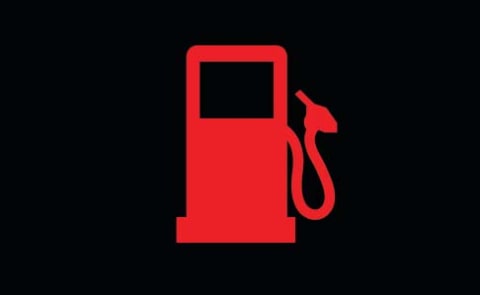
What it looks like: A snake-infested ATM.
What it means: You are running low on fuel. Also: the symbol on the fuel gauge has an arrow next to it—this indicates which side of the car has the gas cap. No more gas station three-point turns in rental cars ever again!
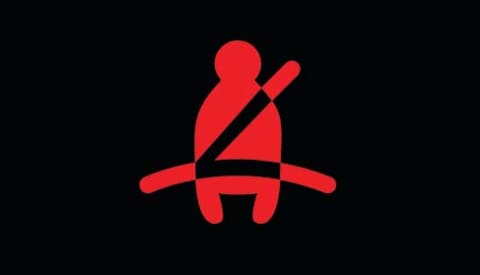
What it looks like: Zorro if he messed up drawing his initial with his sword.
What it means: Buckle your seatbelt , please.
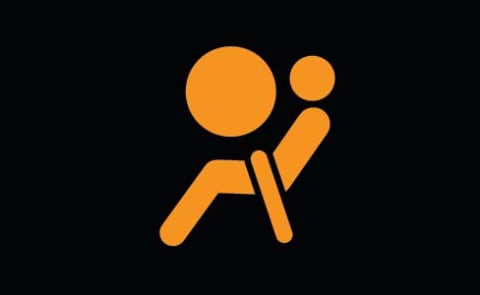
What it looks like: A man sitting calmly in a lawn chair gazing at the sunset.
What it means: There may be an issue with one or more of your car’s airbags, or the airbag system in general.

What it looks like: A jellyfish leaping through a waterfall.
What it means: Your fog lights are on.

What it looks like: Your bass is so loud your car bounces up and down.
What it means: There’s a problem with the car’s air suspension system, which includes inflatable bags meant to make the rider smoother.
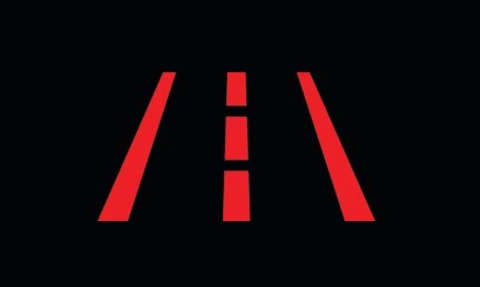
What it looks like: A Mayan pyramid.
What it means: You seem to be drifting out of your lane unintentionally—get your eyes on the road!
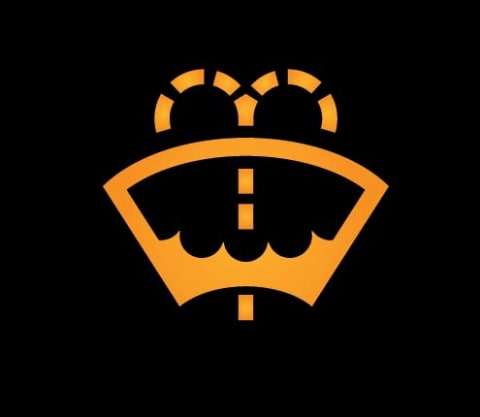
What it looks like: A conductor’s point of view, tapping her music stand and preparing to lead an orchestra consisting of two candy canes that are stuck together.
What it means: The washer fluid level is low. Please fill that up when you get a chance.
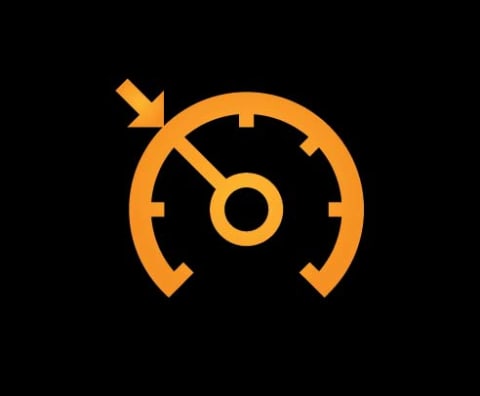
What it looks like: A sundial indicating 10 a.m.
What it means: You’ve turned on cruise control. When the light is orange, it's waiting for you to set the preferred speed. When it turns green, you’ll be traveling at that speed.
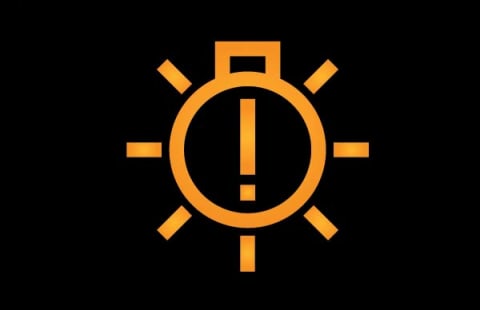
What it looks like: A shiny gold medal from the Shouting! Olympics!
What it means: One of the car’s lamps—the headlight, taillight, or other exterior light—has burned out. You should probably get the bulb replaced before you get a ticket.
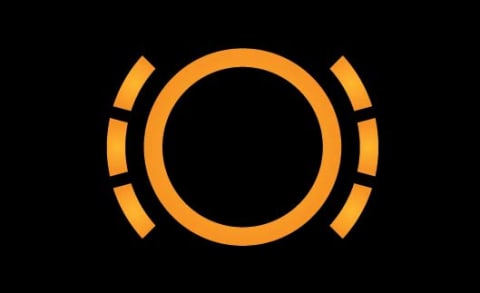
What it looks like: You’re staring down the drain of your kitchen sink.
What it means: The car’s brake pads are getting too thin. Time to get them inspected and replaced.
A version of this story ran in 2016; it has been updated for 2022.
Navigation Lights for Sailboats (And How To Read Them)

Navigation lights on a sailboat can be confusing. If you understand the reason behind why they are the way they are however, they can make a lot more sense.
At their heart, sailboats are really just a power boat and as such must adhere to all power boat rules such as navigation lights. Other times however, a sailboat is classified in a special category. They have a set of additional lights they CAN show as an option, but are not always required to do so.
That’s about as clear as mud if you ask me and I contend that that is where the confusion about lighting a sailboat begins.
Just because you can show a light to identify yourself in times of low visibility, does not mean you have to and then we add in a little sibling rivalry between power and sail and things get downright adversarial when it comes to navigation and the night.
Table of contents
The USCG says You’re a Power Boat Whether You Like It or Not
Much to the consternation of many a sailor who has earned a commercial license to drive their sailboat, when you received your credential from the USCG it says you are a master of steam and power across the top with no mention of wind as a source of propulsion.
It is not until you read the back pages of your little red book that feels like a passport and looks like a US Sailing credential, that you will see the term “sail auxiliary”. That is because most of the time the U.S. Coast Guard knows that you are primarily reliant on your mechanical power to propel your vessel.
It's a sad thing, but the days of commercially viable sail boats are done and all but the most select few even have sails let alone use them as their primary power source. All sail boats by law are powerboats, but not all powerboats are sailboats.
Navigation Lights for a Power Boat
As a power boat, you are required to show certain lights and have been required to do so before power was even invented.
In the days of man powered vessels like the viking ships who relied on oars while in close quarters to power their vessels, they needed to show other boats, friend or foe, where they were by showing lanterns in the dark to identify themselves. As you know, it is a time honored rule among all the nations of the world both past and present, that you must avoid a collision at all costs while at sea and even the viking knew that you should not run into things.
By lighting the front and back of your boat, you could warn other boats of your presence as well as identify which way you were heading. As such there is a very specific rule in the Code of Federal Regulations Number 46 (CFR46 by common name) that spells out with detail how many, the color, the luminosity or brightness, the angle of visibility and the location of all of the lights required for navigation on every single boat, seaplane, submarine and other nondescript vessel conceived by man to date that they must show while underway in reduced visibility.
And there is no flexibility in the rules.
As such a power boat, and by extension all sailboats, MUST, without question show one green light on the starboard bow and one red light on the port bow and one all around white light or lights while operating in reduced visibility. These lights should shine at all 360 degrees of visibility with the bow lights shining at an angle of dead ahead to 22.5 degrees abaft the beam and the stern lights shining 225 degrees dead aft. A forward facing masthead light that is white in color shall shine forward to comply with the directive that all vessels must carry an all around white light. For more read here .
As you can see, there isn’t much wiggle room when it comes to lights that must be shown.
Sailboats get a little flexibility with lights
Sailboats however, are a little different when they are in fact sailboats, which is only when you are entirely reliant on the wind for power and in no way reliant on any mechanical or manual means of propulsion. And for good reason.
Back in the day when men were men and sailboats were wooden, fire was a major concern. Sails were coated with wax and other flammable substances and the wood on boats was saturated with oils and grease. Even the ropes were plant materials saturated with oils to keep them pliable and strong.
Add those highly flammable substances to a parching environment like the sea and you had what was essentially a giant floating tinderbox.
Then tell that giant floating tinderbox that they need to identify themselves to the world at large at night using oil lamps with flames because batteries and lights were not invented yet. It didn't take very long or very many ships burning to the water line for the Governments to say to the sailboats, you get to do things a little different.
As such, sailboats are given special dispensation when it comes to lights aloft. They don't have to show an all around white light in their rigging because no one wanted to set their rig on fire with oil lamps 60 feet up in their rig.
However, when a sailboat takes their sails down such as when they are powered or at anchor, they must resume the display of an all around white light or lights aloft. That became a real challenge with aluminum masts and the disappearance of rat lines on the shrouds because there was no easy way to climb the rig and check the bulbs up the mast on a regular basis.
Red over Green Sailing Machine
I have no idea where the history of this particular light comes from, but if you ever take a deck exam with the USCG, you better remember this mnemonic. An all around red light over an all around green may be displayed on a vessel during times of reduced visibility to indicate that a vessel is operating under sail power alone.
I won’t even speculate on how or why they came up with this particular light configuration, but if you want to use these lights as a sailing vessel, you can do so, but that means that you will need three all round lights at the top of your mast, an all around white, an all around red and an all around green, just in that order.
The red over green is to be displayed in addition to the running lights or the red and green bow lights with the 225 degree stern light. As always, when the motor comes on, so does the steaming light or the forward facing white light that is also usually about ¾ of the way up on your mast to complete the requirement of an all around white light that indicates a power vessel.
What is a “steaming light” and why are you mentioning it now?
Most sailboat electrical panels will have a switch that is labelled “steaming light” and it will only come on when your anchor light is off. This is probably the most confusing part of sailboat navigation lights so if you are confused about this, you're in good company as most people are.
A “steaming” light is named thusly, going back to the days of steam powered sailboats where when they fired up their boilers and doused the sails, they became a power boat once again. There aren’t too many steam powered boats, let alone steam powered sailboats, but the name stuck and it is a vestige of a bygone era.
Either way, when you fire up your motor, you turn on your “steaming light” and that locks out the all around white light which is used for anchoring to minimize the number of switches on your panel and reduce the number of wires in your mast. The fewer wires, the less chance of something not working or becoming disconnected.
The steaming light and the anchor light both go up the mast, but you can’t use an all around white light while using the 225 degree stern light at the deck level because to other boaters you would look like you have two white lights from the stern and that would be confusing.
The anchor light is used exclusively for anchoring while the steaming light is used to indicate you are a power vessel while underway.
As to why I am mentioning it now in the article, is because this would have blown your mind if I started with this subject cause it can be really confusing stuff.
Aspect Recognition with Lights
Remember when I said earlier that lights can help you tell others which way you are heading as well as tell you which way other boats are heading? That is called the aspect of the vessel and the USCG tests you on this for your deck exam as well.
Knowing that the bow lights go 22.5 degrees abaft the beam on both sides or 112.5 degrees on each side, and the stern light faces 225 degrees aft for a total of 360 degrees of visibility, you can tell a lot about where a boat is heading and who has the right of way.
One thing that's easy to remember is red means stop and if you see a vessel's red light, it means stop as you are the give way vessel and approaching the other vessel from his port side. Conversely it works with green as well as that means you are approaching from the other vessel's starboard side and you are the standon vessel.
If you see a red and green light equally low on the horizon, that means your heading dead on into another vessel's path and conversely if all you see is a white light low on the horizon, it means you are overtaking another vessel power or sail, we don’t care because it is an overtaking situation. However, any time you do see a white light aloft in addition to the red and green bow lights, you know you are encountering a power boat.
Then there are angular approaches as well, where you see white and red or white and green light low on the horizon. You know in that case you are seeing a portion of the bow lights and stern lights from the side approaches of a vessel. Based on which direction those lights are heading, you can deduce which way that boat is going in relation to your boat.
So put it all together and you see a green light and a white light low on the horizon with a red over green light aloft, you know that you are approaching a sailboat that is traveling to your port and that might make you the standon vessel. That is of course, if we didn’t concern ourselves with windward and leeward and port tacks and starboard tacks, but that is a discussion for another article. So stay tuned when we talk about sailing rules and the right of way. But for now, do good, have fun and sail far.
Related Articles
Capt Chris German
Capt Chris German is a life long sailor and licensed captain who has taught thousands to sail over the last 20 years. In 2007, he founded a US Sailing-based community sailing school in Bridgeport, CT for inner city youth and families. When Hurricane Sandy forced him to abandon those efforts, he moved to North Carolina where he set out to share this love for broadcasting and sailing with a growing web-based television audience through The Charted Life Television Network.
by this author

Most Recent

What Does "Sailing By The Lee" Mean?
Daniel Wade
October 3, 2023

The Best Sailing Schools And Programs: Reviews & Ratings
September 26, 2023
Important Legal Info
Lifeofsailing.com is a participant in the Amazon Services LLC Associates Program, an affiliate advertising program designed to provide a means for sites to earn advertising fees by advertising and linking to Amazon. This site also participates in other affiliate programs and is compensated for referring traffic and business to these companies.
Similar Posts

How To Choose The Right Sailing Instructor
August 16, 2023

Cost To Sail Around The World
May 16, 2023

How To Drive A Pontoon Boat
Jacob Collier
December 19, 2022
Popular Posts

Best Liveaboard Catamaran Sailboats
December 28, 2023

Can a Novice Sail Around the World?
Elizabeth O'Malley
June 15, 2022

4 Best Electric Outboard Motors

How Long Did It Take The Vikings To Sail To England?

10 Best Sailboat Brands (And Why)
December 20, 2023

7 Best Places To Liveaboard A Sailboat
The 89 Most Common Symbols On Your Car’s Dashboard
- Updated: March 21, 2024
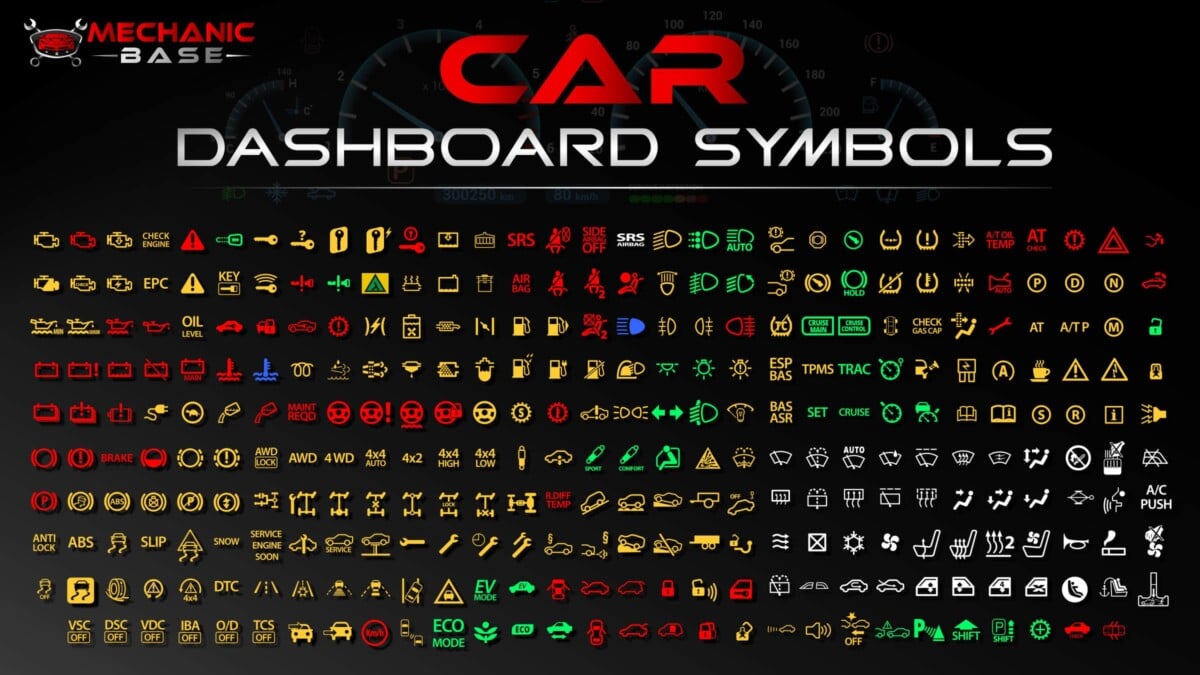
We’re all familiar with that moment of uncertainty when a warning light flashes on our car’s dashboard. It leaves us scrambling for the manual, attempting to decipher what the illuminated symbol signifies.
In this article, we will guide you through the top 89 most common car dashboard symbols and their meanings, empowering you with knowledge for the next time a warning light appears. By recognizing what these lights indicate, you can sidestep expensive repairs in the future.
Some dashboard symbols and warning lights are more common than others. Some are specific to certain car brands, while others will be seen on most car models on the market. We will begin by showing you the most common dashboard symbols that can be found in most car brands.
Here is a list of the dashboard symbols, and you can click on each name to get more information about the specific warning light.
Engine & Emission
| Symbol | Name |
|---|---|
| Symbol | Name |
|---|---|
| Symbol | Name |
|---|---|
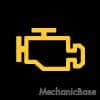
1. Check Engine Light
A Check Engine light indicates an issue with the engine or the emissions. It can be shown either as an engine symbol or as plain text reading “Check Engine”. Read More
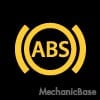
2. Anti-lock Braking System
An ABS light indicates there is an issue with your anti-lock brakes or Anti-lock braking system (ABS). Read more

3. Airbag Indicator
An airbag light means that there is an issue with the airbag system. The airbags will not deploy in an accident with the light on. Read more
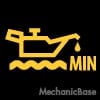
4. Oil Level Warning Light
A yellow oil level warning light indicates a low engine oil level. The oil level should be checked as soon as possible. Most likely due to an oil leak.
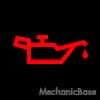
5. Oil Pressure Warning
A red oil pressure light indicates low oil pressure in the engine. Your engine should be switched off immediately to avoid damage when the oil pressure warning light shows. Read more
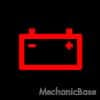
6. Battery Charge Warning
A battery charge warning symbol means that the generator is not charging the battery properly and that your engine is at risk of shutting down due to low battery capacity. Read more
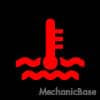
7. Coolant Temperature Warning Light
An engine temperature warning light means that the engine coolant temperature is high and that the engine should be turned off immediately to avoid further damage. Read more
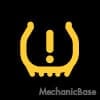
8. Tire Pressure Warning Light
A tire pressure warning light indicates low air pressure in one or more tires. It can also be caused by a faulty or uncalibrated tire pressure sensor. Read more

9. Traction Control/ESP Light
An ESP or Traction control light indicates an issue with the traction control system. Your traction control system will not work when the light is on, and this can be dangerous. Read More
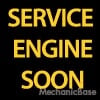
10. Service Engine Soon
A Service Engine Soon message indicates minor trouble with the engine or low fluid levels. Read more
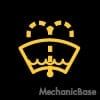
11. Low Washer Fluid Light
A washer fluid symbol means that the windshield washer fluid level is low or has incorrect measurements.
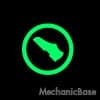
12. Automatic Shift Lock Symbol
An automatic shift lock symbol indicates the brake pedal is not pressed. The car will not start, and the shifter won’t move out of Park.
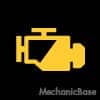
13. Reduced Engine Power
A Reduced engine power car light means that there is an issue with the engine and the power is reduced to protect the engine. Read more
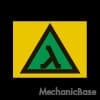
14. Lambda Warning Light
A lambda warning light indicates there is an issue with the air-fuel mixture or an issue with the oxygen sensors. This light is more common in older car models.
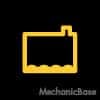
15. Low Coolant Indicator
A low coolant warning light indicates there is a low coolant level in the coolant reservoir or an issue with the coolant level sensor. Check for leaks around the radiator, radiator cap , coolant hoses, or water pump.

16. Glow Plug Indicator (Diesel)
A glow plug symbol indicates there is an issue with the glow plugs or the glow plug control system.

17. Fuel Filter Level Warning
A fuel filter level warning light means that the water-trap in the fuel level is full and needs to be emptied.

18. Power Steering Level Symbol
A power steering level warning light indicates the power steering fluid level is low, or there is an issue with the level sensor.
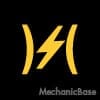
19. Electronic Throttle Control Light
An electronic throttle control (ETC) warning light indicates there is an issue with the engine’s electronic throttle body or the system.

20. Particle Filter Warning (Diesel)
A diesel particulate filter warning light indicates there is an issue with the diesel particulate filter system (DPF), or that the particle filter is full and needs regeneration or replacement.
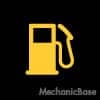
21. Low Fuel Level
A low fuel level symbol means that the fuel tank level is low or that there is an issue with the fuel level measuring system. There could also be an arrow, indicating which side your gas cap is on.
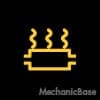
22. Catalytic Converter Warning
A catalytic converter warning light indicates there is an issue with the catalytic converter control system, or the catalytic converter is damaged.
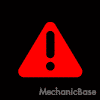
23. Master Warning Light
A master warning light normally shows up together with another warning light and means that there is an issue with your car. Let a mechanic take a look.
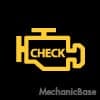
24. Blinking Engine Light
A blinking or flashing engine light indicates there is an issue with your engine ongoing right now. A flashing light is normally triggered by a misfiring engine. Read more.

25. Transmission Temperature Warning
A transmission temperature warning light indicates the transmission temperature is too high, or there is an issue with the temperature measurement.

26. Traction Control Off
The traction control off symbol means that the traction control is manually switched off.
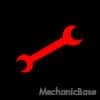
27. Powertrain Fault
A powertrain fault symbol indicates there is an issue with the powertrain or drivetrain system, like the 4WD or AWD system, for example.

28. Overdrive Off indicator
An overdrive off symbol means that the automatic transmission overdrive system is switched off. Read more
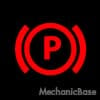
29. Parking Brake Light
A parking brake warning light indicates the parking brake is engaged, or there is an issue with the parking brake system

30. Differential Temperature Warning
A differential temperature warning light indicates the differential temperature is too high, or there is an issue with the measurement system.

31. DTC Warning Light
A DTC warning light means that there is an issue with the BMW traction control system.

32. ESP BAS
An ESP BAS warning light indicates an issue with the electronic stability program or brake assist program.

33. Automatic Gearbox Warning
An automatic gearbox warning indicates an issue with the automatic transmission or the system controlling it.

34. Brake Pad Warning
A Brake pad warning light means that the front or rear brake pads are worn and need to be replaced.
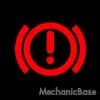
35. Brake Warning Light
A brake warning light indicates an issue with the brake system. This should be checked immediately because you may lose your brakes otherwise.

36. Service Vehicle Soon
A service vehicle soon symbol indicates there is an issue with the ABS, traction control, or electric suspension system.

37. 4WD Engaged Indicator
A 4WD engaged symbol means that the four-wheel-drive system is engaged.

38. 2WD Engaged Indicator
A 2WD engaged symbol indicates the 4WD system is switched off and the car is sending power to two wheels only.

39. All Wheel Drive (AWD/4WD)
An All Wheel Drive symbol indicates that the AWD or 4WD system is engaged.

40. Hazard Lights On
A hazard lights symbol means that the hazard lights are turned on.
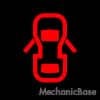
41. Door Ajar Symbol
A door ajar symbol indicates that one of the doors is open or there is an issue with the door switch system.
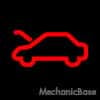
42. Hood Open
A hood open symbol indicates that the hood is not closed properly. It is very dangerous to drive with a hood that is not secured at higher speeds.

43. Lane Departure Warning
A lane departure warning light indicates the vehicle is moving out from the lane without signaling

44. Forward Collision Warning
A forward-collision warning light means that there is a potential collision detected.
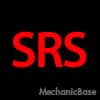
45. SRS Light
An SRS warning light indicates there is an issue with the airbag or supplemental restraint system. Read more
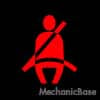
46. Seatbelt Indicator
A seatbelt symbol indicates one or more seat belts are not closed or there is an issue with the system. Check both the driver and passenger sides and the rear seats on some car models.
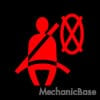
47. Side Airbag Warning Light
A side airbag warning light indicates the side airbags are turned off or there is an issue with the side airbags.

48. Power Steering Warning Light
A power steering warning light means that there is an issue with the power steering system
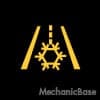
49. Icy Road Warning Light
An icy road warning light indicates the outside temperature is cold and that there is a risk of an icy road. Slow down!

50. Distance Warning
A distance warning indicates the front radar detected that your vehicle is too close to the car in front or is being approached too quickly.

51. Bonnet Open
A bonnet open symbol means that the bonnet is not closed properly, or there is an issue with the bonnet lock switch.
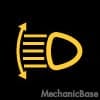
52. Headlight Range Control
A headlight range control warning light indicates there is an issue with the headlight range control system
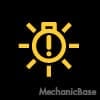
53. Exterior Light Fault
An exterior light warning light indicates an issue with one or more exterior lights, usually faulty light bulbs.

54. Highbeam Light Indicator
A high beam light symbol means that the high beam lights are turned on

55. Auto High Beam Lights
An auto high beam lights symbol means that the auto high beam system is turned on

56. Position Light Indicator
A position light symbol will turn on when the headlights are switched off and the position lights are on


57. Low Beam Indicator Light
A low beam light symbol is turned on when the low beam headlights are turned on

58. Front Fog Lights On
A front fog light symbol is illuminated when the front fog lights are turned on.
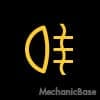
59. Rear Fog Light On
A rear fog light symbol is illuminated when the rear fog lights are turned on.
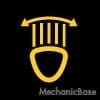
60. Turn Lights Warning Symbol
A turn light warning symbol indicates that there is an issue with the headlight’s turn-light system.
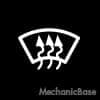
61. Windshield Defrost Indicator
A windshield defrost symbol indicates that the windshield defroster is turned on.
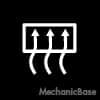
62. Rear Window Defrost
A rear window defrost symbol means that the rear window’s defroster is turned on.
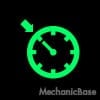
63. Cruise Control On Indicator
A green cruise control symbol indicates the cruise control is switched on and engaged.
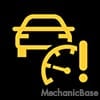
64. Cruise Control Warning
A cruise control warning symbol indicates there is an issue with the cruise control or throttle control system.
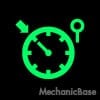
65. Cruise Control Speed Limiter
A cruise control speed limiter symbol means that the cruise control system will limit the max speed.

66. Cruise Control SET Indicator
A “SET” symbol indicates that the cruise control is set to a fixed speed and trying to hold the speed.

67. Shift Up Indicator
A shift up symbol indicates that it’s time to shift up to a higher gear.

68. Shift Down Indicator
A shift down symbol means that it’s time to shift down to a lower gear.

69. Auto Windshield Wiper
An auto windshield wiper symbol indicates that the auto wiper system is turned on.
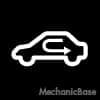
70. Recirculated Cabin Air
A recirculated cabin air symbol indicates that the car will recirculate the air inside the car instead of taking air from the outside of the car

71. Heater Blower Fan On
A heater blower fan symbol means that the blower motor is turned on.

72. Heated Seats On
A heated seat symbol indicates that one or more seats’ heating system is turned on.

73. Hill Descent Control
A hill descent control symbol indicates that the hill descent system is turned on and will limit the car’s speed while going downhill.
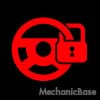
74. Steering Lock Warning Light
A steering lock warning light means that there is an issue with the steering lock or that the car key is not recognized
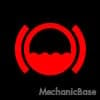
75. Brake Fluid Level Warning
A brake fluid level warning indicates that the brake fluid level is too low, or there is an issue with the measurement system.

76. Key Not in Vehicle Indicator
A Key Not in Vehicle symbol indicates the car’s immobilizer system can’t reach or recognize your car key.
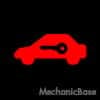
77. Immobilizer Indicator
An immobilizer symbol means that it can’t reach or recognize your car key, or there is an issue with the immobilizer system.

78. Ignition Switch Warning
An ignition switch warning symbol indicates that there is an issue with the ignition switch system.
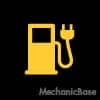
79. Low Electric Battery Charge
A low electric battery charge symbol indicates that it’s time to charge your electric vehicle’s battery.

80. Brake Lights Warning
A brake light warning light indicates that the brake lights are not working.

81. Air Suspension Warning
An air suspension warning symbol means that there is an issue with the air suspension system.
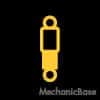
82. Suspension Warning Light
A suspension warning light shows up when there is a malfunction with the electric suspension system.

83. Car on Ramp Mode
A car on ramp mode warning symbol turns on when the car’s tires are raised up in the air or when the repair mode is activated.

84. ECO Mode On Indicator
An ECO Mode on symbol indicates that the Economy system is turned on. Read more

85. Rear Spoiler Warning
A rear spoiler warning light indicates that there is a malfunction in the rear spoiler electric system

86. Lane Assist
A green lane assist symbol indicates that the lane assist system is turned on.
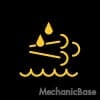
87. Exhaust Fluid (Diesel)
An exhaust fluid warning light means that the exhaust fluid (AdBlue) level is low in your diesel car.
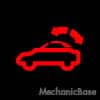
88. Convertible Roof Warning Light
A Convertible Roof Warning Light indicates that the convertible roof system is opening or closing.
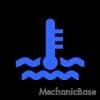
89. Blue Coolant Temp Light
A blue engine temperature symbol means that the engine is still cold and you should drive carefully.
- Toyota Dashboard Lights
- Lexus Warning Lights
Categories: General , Warning Lights
Related Posts
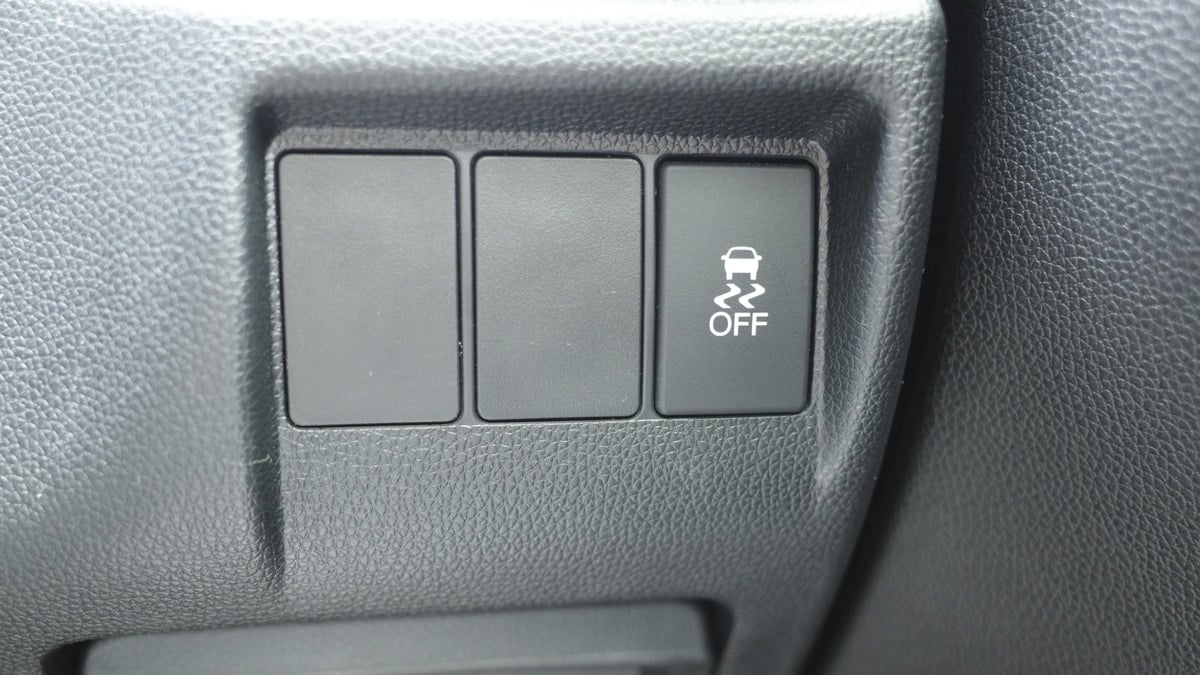
Latest Posts
- The Best & Worst Years Of Ford Explorer
- Best & Worst Years Of Toyota Corolla
- Best & Worst Years of Toyota RAV4
- When Should Your Child Switch To A Forward-Facing Car Seat?
- The Best & Worst Years Of Toyota Camry
- I Accidentally Put Premium Gas In My Car, What To Do?
Boat Navigation Lights Rules: Illustrated Beginners Guide
When navigating at night, the lights on other boats are your first clue about the moving dangers around you. And your navigation lights are your first line of safety in avoiding collisions in the dark, and they tell others vessels what you are and what you are doing. The rules sound complex, but with a little understanding you can get the basics for any situation.
So what are the basic navigation light rules? For most small vessels, motoring requires red and green (port and starboard) lights, and a white light visible in all directions around the boat. This is almost always a stern light and a masthead light on sailboats. Boats under sail require port and starboard lights, and a white stern light. Sailboats below sixty-five feet may show a tricolor light at the masthead instead of side and stern lights when sailing.
That's it, in a nutshell. There's a little more to it, as the rules change with different sizes and there are some specifics about angles of display for the colors. Identifying other ships at sea requires more study, but the basics are the same. And it's not much trouble to make sure you've always got the proper lights on your vessel.
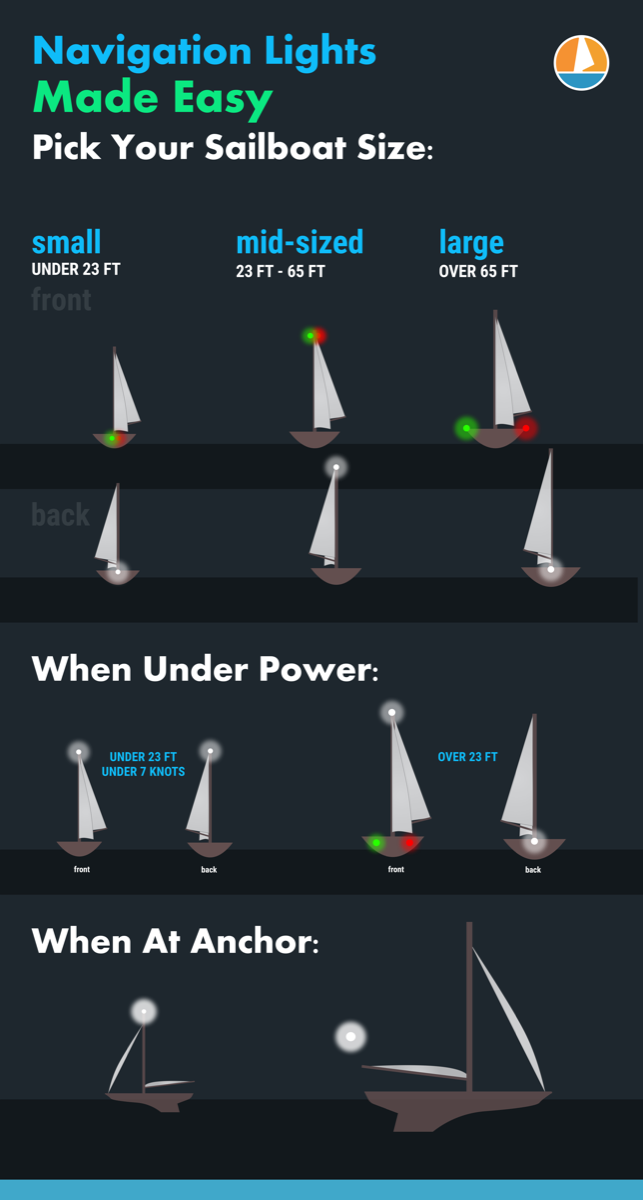
On this page:
What are the official colregs rules for your sailboat, what about the uscg (united states coast guard) rules, lighting at anchor, identifying the boats around you.
The International Regulations for the Prevention of Collision at Sea , abbreviated "COLREGS" is very specific about the lights required, their shapes and sizes, and the distance they must be visible. For the smaller boat, the following definitions apply.
- Masthead Light - a white light placed centerline on the boat showing an arc of 225 degrees with 112.5 degrees either side of the front of the vessel.
- Sidelights - A red light on the port side and a green light on the starboard. They must show an arc of 112.5 degrees from centerline of the bow.
- Stern light - A white light on the stern of the boat showing an unbroken arc of 135 degrees from centerline of the vessel.
- All-round light - A light showing in an unbroken arc of 360 degrees.
The good news is you need not measure these angles. Any properly installed USCG or COLREGS approved light which will cover the correct arcs. If you have to replace the original light from your boat, make sure it's with an approved replacement.
Lights When Sailing
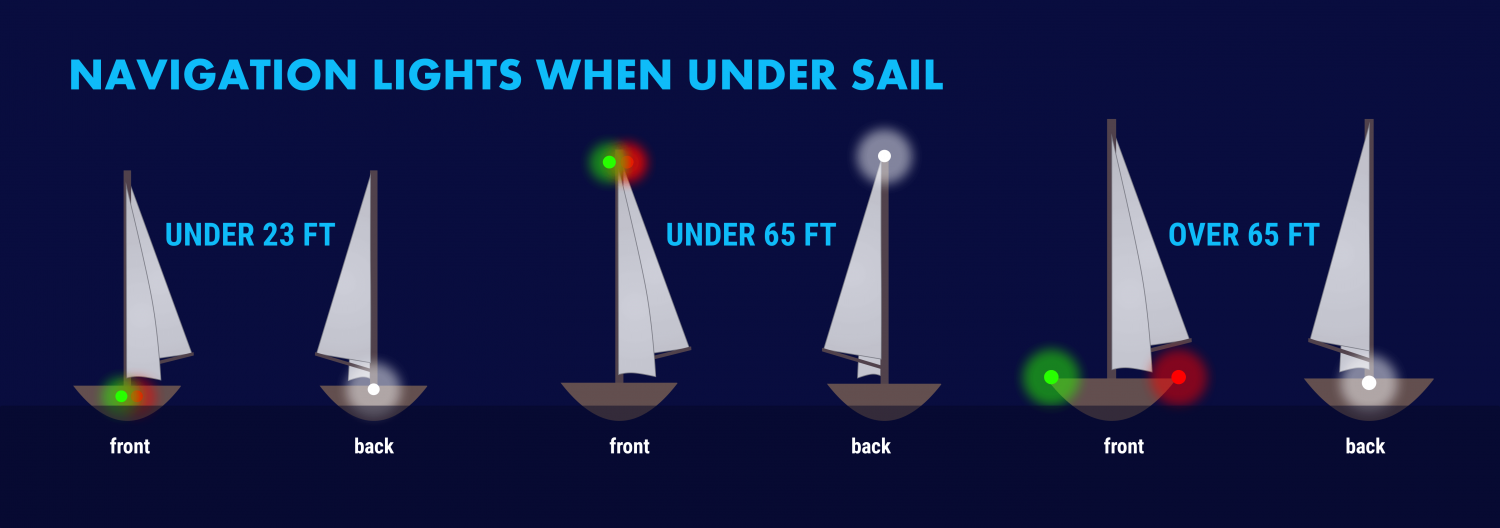
The specific rules for a sailboat under sail are in COLREGS Rule 25 and vary slightly with the size of the boat. A sailboat powering is considered a power boat and falls under in Rule 23.
- Under 23 feet (7 meters) - side lights and a stern light, possible. If these lights can not be displayed a light must be kept at hand to help avoid a collision. This can be a bright flashlight.
- Over 23 feet - Side lights visible to one nautical mile and stern light visible for two.
- Vessels under 65 feet may combine both sidelights into a single lantern on the bow.
- May show a tricolor light on the masthead instead of sidelights and a stern light. It's one or the other though, do not show these lights at the same time .
- Masthead light must be visible for three nautical miles, all other lights must have a two nautical mile visibility.
- Side lights must be separated.
- May not show a masthead tricolor light.
- Masthead light must have five nautical mile visibility, all other lights must be visible for two nautical miles.
- Optional masthead lights - any vessel under sail may display a red light over a green light at the masthead with sidelights and stern light. The red over green may NOT be displayed with a masthead tricolor light. It's one set or the other.
Lights When Motoring
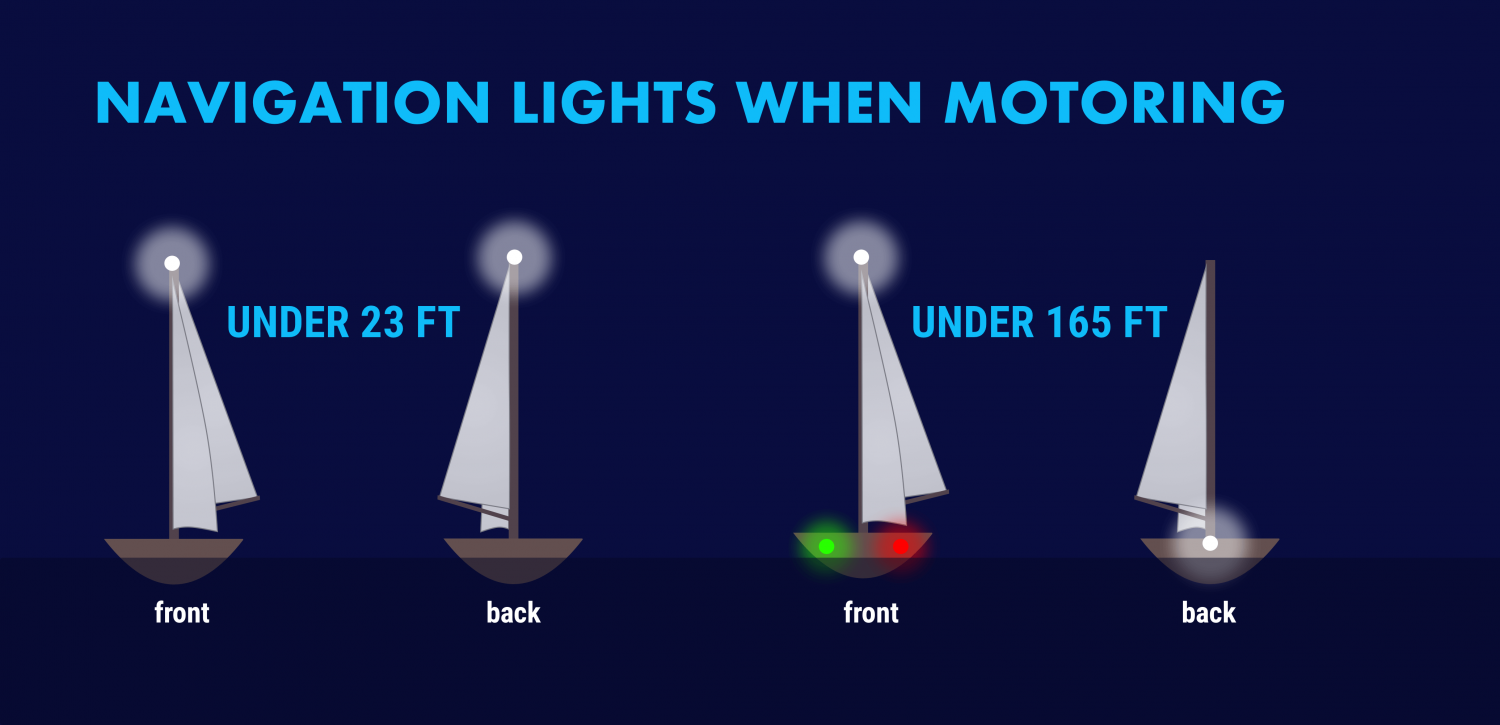
For all navigational purposes a sailboat under power is considered a power boat. This includes motor sailing - if the engine is on and providing propulsion you are on a power boat, even if the sails are up . This applies to navigation lighting, sound signals in fog and limited visibility, and rights of way.
Sailboats under 50 meters under power need to show:
- A masthead light
- Stern light
A power-driven vessel under 23 feet (7 meters) that does not exceed seven knots of speed may display an all around white light, though sidelights should be used if available.

The USCG has published its own "Rules of the Road" that are based on the COLREGS. In addition, it has rules for the "Inland Waterways" for rivers, inland lakes and the Great Lakes.
The good news is this has no impact on what you have to do with your own boat.
They mostly relate to lighting changes on towed vessels like barges and tugs. For example, a vessel towing or pushing another vessel in the ocean under COLREGS shows two masthead lights, sidelights and a stern light, whereas in Inland Waterways the towing or pushing vessel displays two yellow towing lights instead of a white stern light.
If you sail on lakes, rivers or the Great Lakes where towed commercial traffic is common you should learn the inland lights, but coastal or ocean sailors will never see these.
When you anchor outside a designated mooring field, you should display an all around white light at the masthead or as high in the boat as practical.
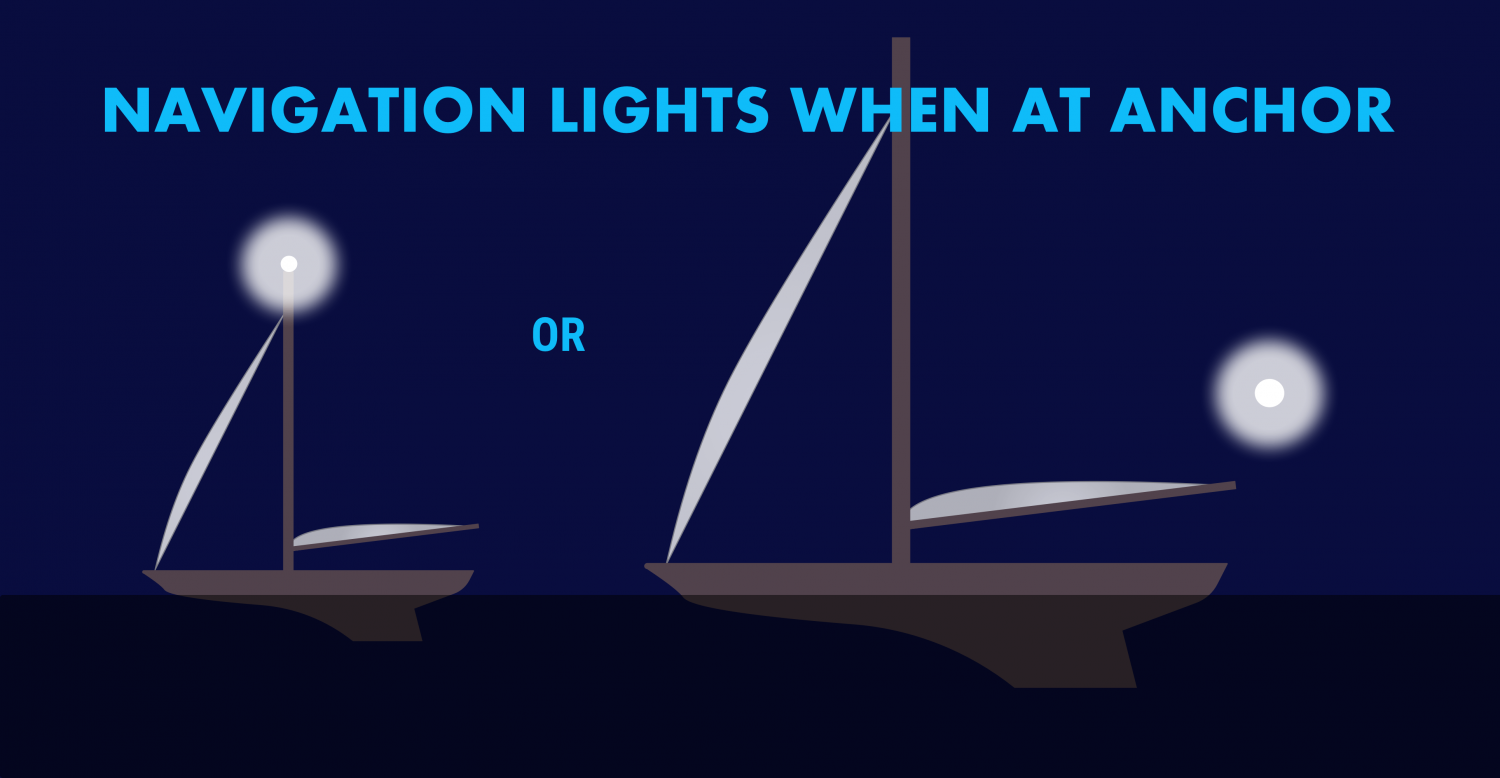
If your boat is large and has a very tall mast, you may wish to display another light closer to the waterline. Boats approaching in the dark may not see a light on a mast sixty or seventy feet in the air when they are close to your boat.
We use a simple garden path light on our stern when we anchor, left in a rod holder or flag socket. It comes on automatically at dusk and is a cheap and easy way to be more visible. There is no specific rule stating you can not display more lights than required, or the nature of any lights beyond the required all around light.
The COLREGS also specify that a round black "daymark" should be displayed in the rigging of any vessel at anchor. Very few small vessels observe this, however it is the correct display for a vessel in an anchorage.
If you tie to a mooring in a marked mooring area you are not required to display anchor lights, but there is no harm in doing so.
The other important reason to know your lights is to figure out what's going on around you at night. The water may be ablaze with white, red, green and other lights at night and they are your first key to avoiding collisions and problems.
All combinations of lights for fishing boats, commercial vessels, and so on are outside this post‘s scope. The odds are small you will encounter a submarine, seaplane or hovercraft at night, but there are regulations regarding specific lighting for each of those vessels!
There are a few fundamentals to help you figure out what that is you see on the horizon, which way it is going, and whether it is a danger to you.
Port Wine is Red
The fundamental rule is that red sidelights will ALWAYS be on the port side of a vessel, and green lights will always be on starboard. However, some vessels can use all around red and green lights for other purposes, though those will be higher than sidelights.

The light‘s on a ship is not important, some large tankers and freighters will have their sidelights far aft and put them on the superstructure for better visibility. It is not safe to assume that sidelights you can see are on the bow of large vessels .
When you can see the color, you know which way the bow is pointing. If it's red, it's pointing more or less to the left and will travel in that direction. A green light shows it is heading more or less to your right.
If you can see the red and green lights at the same time, you are looking directly at the bow of the vessel. When you are far away, this isn‘t as alarming as if you are close crossing. Seeing red and green lights together on a vessel is something you never want to see for long.
Be aware of red and green lights used in combination with other red, green and white lights. These may not be running lights and could have other significance.
Tankers, Freighters and Large Ships
Tankers, freighters and large ships will have side lights, a stern light and a masthead light. In addition, on vessels over 50 meters there will be a second masthead light further aft and higher than the forward light. The masthead light positions are a better tipoff to the bow direction and how far from the bow the sidelights might be. Remember - on a large vessel the sidelights may not be at the bow or even close to it.
USCG Inland Rules allow for a second all-around white light on large vessels on the Great Lakes instead of a second masthead light.
Fishing Boats
Fishing boats engaged in fishing will have more complex light displays. When they aren't fishing, they will show lights like any power vessel, but Rule 26 spells out light combinations that vary by the fishing activity being done. In general:
- Boats which are Trawling but not making headway will display a green all-around light over a white all-around light , and a masthead light aft of these lights. Boats making headway while trawling will show these lights, plus sidelights and a stern light.
- A vessel fishing other than trawling will show a red all-around light over a white all-around light . When making way they will also show sidelights and a stern light.
- If a vessel has gear more than 150 meters away from the boat, it will show a second all around light in the direction of the gear. The best rule is to give fishing boats as wide a berth as you can at night. They're easy to pick out if you check the top light configurations but their course may be difficult to predict.
Towing and Pushing
Towed vessels can be the most dangerous to cross, but they have the most lights to tell you what is happening. Refer to COLREGS or the USCG Rules of the Road Rule 24 for all combinations You can pick a tow/push vessel out with the following lights:
- Two or three masthead lights in a vertical line. Three masthead lights shows a tow over 200 meters. Additional masthead lights may show for larger tow vessels.
- A towing light (yellow light with the same characteristics as a stern light) directly above the stern light.
- The will also have side lights and a stern light.
- The towed vessel will show sidelights and a stern light. Lighting may vary under USCG inland rules, where towing lights may replace stern lights. Learn these differences if this is your regular cruising ground. If you think there is a tow ahead of you, always go well behind the aft most set of lights. Never go between a tow and avoid crossing ahead if possible as it may restrict their maneuverability.
Special Situations
There are several rare situations you may encounter. As a general rule, if there are a lot of lights and you don't understand them look for the sidelights on a moving vessel. If you can find them and figure out the direction it is moving, it makes the vessel easier to avoid. Stay well clear of lights you do not understand if you can avoid them without risk.
Most of these signals are used by larger, commercial vessels and you will not need them.
They use these light combinations with other light combinations. For example a towing vessel may also be restricted in maneuverability, and a vessel constrained by draft will show running lights if moving.
- Not Under Command - two all around red lights in a single line
- Restricted in Ability to Maneuver - red, white then red in a single line
- Constrained by draft - three all around red lights
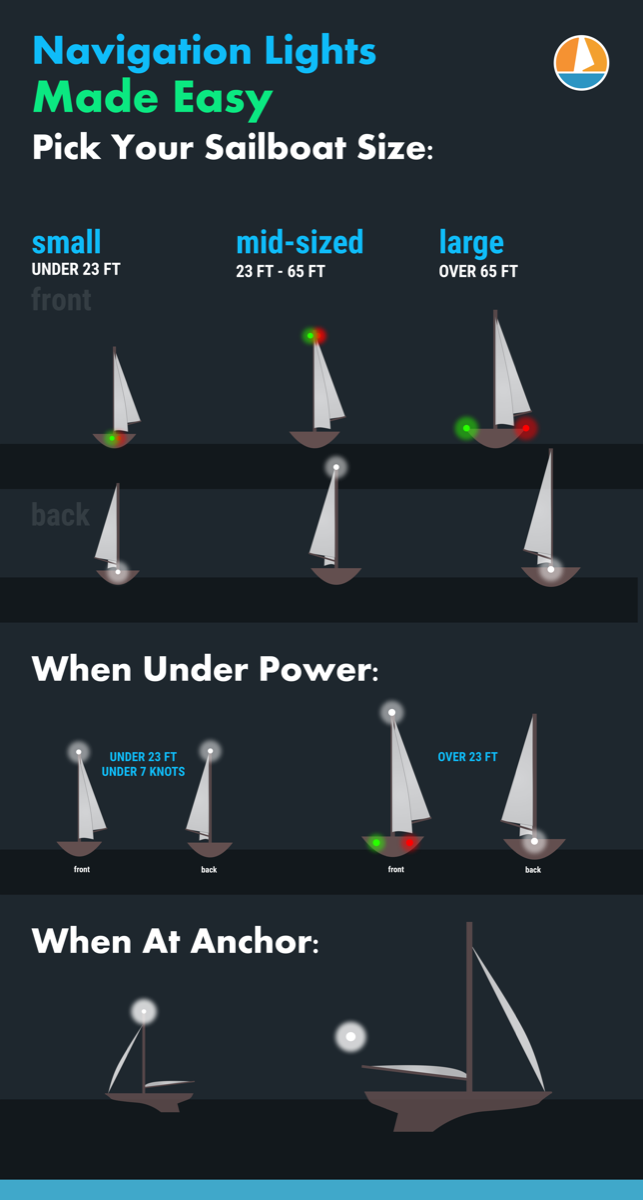
Leave a comment
You may also like, 17 sailboat types explained: how to recognize them.
Ever wondered what type of sailboat you're looking at? Identifying sailboats isn't hard, you just have to know what to look for. In this article, I'll help you.

The Ultimate Guide to Sail Types and Rigs (with Pictures)
Car Warning Light Symbols and Indicators
Home » Car Warning Lights: Resource Centre » Car Warning Light Symbols and Indicators
Which Warning Lights Are Active On Your Dashboard?
The following guide will help you understand which car warning light symbols and indicators can be found on your dashboard for most makes and models of cars, trucks, buses and motorbikes.
You’ll learn whether it is a critical warning that requires immediate attention , or whether you have time to visit a local mechanic.
Want a simple way to monitor your car health? Get help from GOFAR’s adaptor here
Jump to: Warning Symbols | Safety Symbols | Lighting Symbols | Common Symbols | Advanced Feature Symbols | Diesel-Powered Vehicle Symbols
Warning Symbols
Check your car’s dashboard lighting as it is essential to identify your car’s potential problem, safety issues or immediate failure points.

Engine Temperature Warning Light
Indicator light means the engine temperature has exceeded normal limits. Check coolant level, fan operation, radiator cap, coolant leaks. Click

Battery Charge Warning Light
Indicator light means that the car’s charging system is short of power or is not charging properly. It normally indicates a problem with the battery itself or the alternator. Click

Oil Pressure Warning Light
Indicator light means loss of oil pressure, meaning lubrication is low or lost completely. Immediately check the oil level and pressure. Click
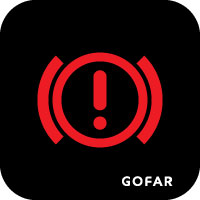
Brake Warning Light
Indicator light turns on when the handbrake is on. If it lit continuously, it means that hydraulic pressure has been lost in one side of the brake system or that the fluid level in the master cylinder is dangerously low (due to a leak somewhere in the brake system). Click
Safety Symbols
Your vehicle’s dashboard light plays an important role. These lights indicate an issue with your car that needs either an immediate action or checking.
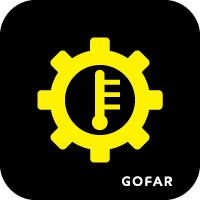
Transmission Temperature

Tire Pressure Warning Light
Indicator light means the pressure is low in one of your tires. Click
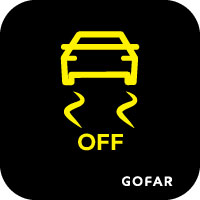
Traction Control Off
Indicator light means that the vehicles TCS (traction control system) has been deactivated. Click
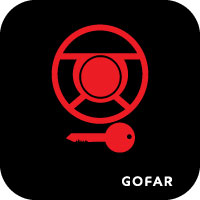
Steering Wheel Lock
Indicator light means your steering wheel is locked and can not be moved. To turn off the steering lock, insert the key into the ignition and turn it to at least the first position while turning the steering wheel in either direction. Click

Trailer Tow Hitch Warning
Indicator lights mean that the tow hitch is unlocked or that there’s an issue with the lighting system. Click

Traction Control Light
Indicator light turns on when the vehicle TCS (traction control system) is activated. Click

Service Vehicle Soon
Indicator light turns on when there is a fault condition in an area of the vehicle chassis systems such as—the anti-lock (ABS) brake system, the traction control (TCS) system, the electronic suspension system, or the brake hydraulic system. Click

Security Alert
Indicator light will turn on momentarily if the ignition switch is locked and will need the proper transponder-equipped key to restart. If the light is visible when the vehicle is on, then it typically indicates a malfunction in the security system. Click

Side Airbag
Indicator light means a fault with the side airbag. Click

Reduced Power Warning
Indicator light means that the Engine Computer has limited engine power output. Click

Seat Belt Indicator
Indicator light means that a seat belt has not been secured for a passenger in the vehicle. Click

Press Clutch Pedal
Indicator to push the clutch. Click

Powertrain Fault
Indicator light turns on when a powertrain or AWD fault has been detected. Contact your mechanic as soon as possible. Click

Power Steering Warning Light
Indicator light turns on if there is an issue with the power steering system, and will be disabled until fixed. Click
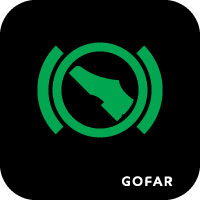
Press Brake Pedal
Indicator to push the brake pedal. Click

Parking Brake Light
Indicator light means park brake is on. Click

Overdrive Light
Indicator light means that the vehicle’s overdrive system has been manually turned off. Click

Oil Change Reminder
Indicator light means that oil life has expired. Click

Master Warning Light
Indicator light usually accompanied by another warning light and indicates that one or more warning systems have been detected. Click

Information Warning Light
Indicator light will turn on when a new message is stored in the information display. It will be red or amber in color depending on the severity of the message and will remain on until the cause of the message has been rectified. Click

Icy Road Warning Light
Indicator light turns on when the outside air starts to reach freezing temperatures, around 35°F or 3°C. Click

Gas/Fuel Cap
Indicator light turns on if the gas/fuel cap is not properly tightened. Click

ESP Fault/Traction Control Malfunction
Indicator light means that there is a problem with the vehicle’s traction control. Click

Electric Park Brake
Indicator light turns on when the electric parking brake has a malfunction. Click
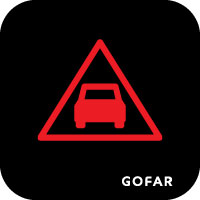
Distance Warning
Indicator light means that a vehicle in front is too close or is being approached too quickly, or that a stationary obstacle exists in the direction of travel. Click

Clogged Air Filter
Indicator light turns on when there is reduced airflow to the engine. Have the air filter replaced or inspected. Click

Child Safety Lock
Indicator light means child safety lock is active. Click

Check Engine or Malfunction Indicator Light (MIL)
Indicator light turns on whenever the engine is turned on to check the bulb. If the light stays illuminated, the car’s diagnostic systems have detected a malfunction that needs to be investigated. Click

Catalytic Converter Warning
Indicator light means the catalytic converter is either overheating or not operating as intended. Click

Brake Fluid
Indicator light means that the brake fluid level is low. Click

Brake Pad Warning
Indicator light means that the brake pads are worn. Click

Brake Lights Warning
Indicator light means an exterior brake light bulb is defective. Check the operation of all the exterior brake light bulbs. Click

Automatic Gearbox Warning
Indicator light means there’s a gearbox/transmission malfunction. Click
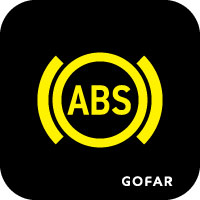
Anti-lock Braking System (ABS)
Indicator light means there may be a malfunction in the ABS system. Click

All Wheel Drive (AWD/4WD)
Indicator light turns on when there is a malfunction with the 4WD system. Click

Airbag Indicator
Indicator light turns on when the front airbag is switched off. If this lamp lights up or flashes there is a fault in the airbag or seatbelt system. Click

Airbag Deactivated
Indicator light turns on when there is a fault in the rear spoiler system. Click

Adaptive Suspension Dampers
Indicator light means there is a need to contact an authorised repairer. Click

4 Wheel Drive (4WD) LOCK Indicator Light
Indicator light means that the vehicle’s 4WD Lock mode is activated. Click

Air Suspension
Indicator light means that there is a problem with the air suspension bags, likely due to a leak or inflation issue. Click
Lighting Symbols
Vehicle lighting symbols are connected to your car’s lighting system. These symbols are usually blue, green, or yellow in colour.
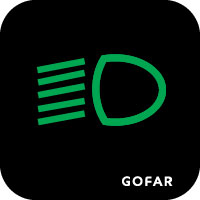
Low Beam Indicator Light
Indicator light means that the vehicles dipped beam is on. Click

Indicator light means that there is an exterior light on the vehicle that is not functioning properly. Click

High Beam Light Indicator
Indicator light means your car’s high beam headlights are on, or if the high beam flash function is used. Click

Headlight Range Control
Indicator light turns on if there is an issue detected with the headlight range control system. Click

Front Fog Lights
Indicator light means front fog lights are turned on. Click
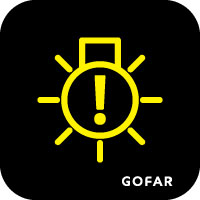
Exterior Light Fault
Indicator light means any exterior light on your car isn’t working. Click

Auto High Beam
Indicator light means the Auto High Beam system has switched on high beam headlights. Click

Adaptive Light System
Indicator light will lit when adaptive headlights are turned on. Click

Side Light Indicator
Indicator light will turn on when the normal headlights are in use. Click

Rear Fog Lights Switched On
Indicator light means rear fog lights are on. Click

Rain and Light Sensor
Indicator light means there is an issue with the sensor system. The wipers and lights will not function automatically. Click
Common Symbols
To avoid future problems with your car it is important to check not just the warning lights but also the common vehicle lights.

Windshield Defrost
Indicator light means that the window defrost is in operation. Click

Washer Fluid Reminder
Indicator light indicates if the windscreen washer fluid reservoir is nearly empty. Fill the washer fluid reservoir. Click

Rear Window Defrost
Indicator light means that the rear window defrost is in operation. Click

Low Fuel Level
Indicator light means that the car is running low on fuel and will soon need a refill. Click

Key Not in Vehicle
Indicator light means the key is not in the car. Click

Hood/Bonnet Open
Indicator light means that the car hood is not closed properly. Click

Hazard Lights On
Indicator light means hazard lights are turned on. Click

Indicator light means that the internal ventilation/fan is in operation. Click

Indicator light turns on when one or more doors of the car are not shut properly. Click

Direction/Signal Indicators
Indicator light means that one of the turn signals (left or right) has been activated. Click

Car on Ramp
Indicator light means that the vehicle is on a ramp/jack system. Click
Advanced Feature Symbols
The advanced feature symbols of your car are associated with a special and advanced automotive feature. It prompts you if there are potential issues or if the system is active and operating.

Recirculated Cabin Air
Indicator light means that the vehicle’s ventilation system is recirculating air from within the vehicle, suitable when particularly cold outside. Click
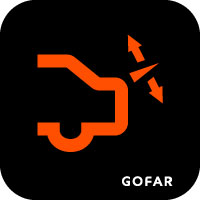
Rear Spoiler Warning

Parking with Park Assist Pilot
Indicator light means PAP (Park Assist Pilot) is activated. Click
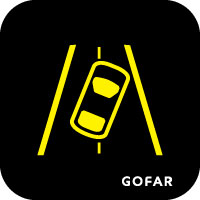
Lane Departure Warning
Indicator light means the vehicle is detected to be moving out of its current lane without signalling. Click

Lane Assist
Indicator light turns on when the lane assist system is switched on and road markings can be detected. Click
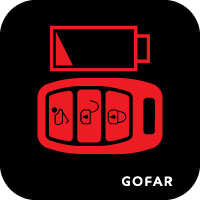
Key Fob Battery Low
Indicator light lets you know when your key fob battery needs to be changed and replaced, so you can continue using the remote. Click

Ignition Switch Warning
Indicator light means there’s an issue with the ignition system or the car key. It could be due to a glitch or worn out key. Click

Hill Descent Control
Indicator light turns on when the system is activated and helps you maintain a specific speed while driving down a hill. Click
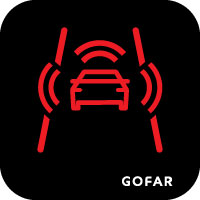
Forward Collision Warning
Indicator light turns on when a potential collision is detected. Click

Eco Driving Indicator
Indicator light will turn on when the Eco function is activated. Click

Cruise Control
Indicator light means the cruise control system is activated. Click

Convertible Roof Warning Light
Indicator light will turn on while the roof is either opening or closing. If the lamp is lit continuously the roof is not fully opened, or there is a fault in the system. Click

Brake Hold Indicator Light
Indicator light means that the brake hold system is functioning properly. Click

Blind Spot Indicator Light
Indicator light turns on when a vehicle or obstruction is detected in the blind spot. Click
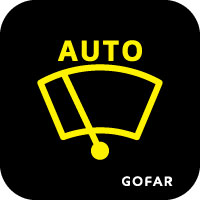
Auto Windscreen Wiping
Indicator light means the windscreen wipers are in operation on Automatic mode. Click

Automatic Emergency Braking (AEB)
Indicator light turns on when the AEB system is turned off or when the radar sensor or cover is blocked with dirt or snow. Click
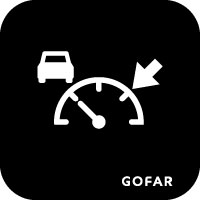
Adaptive Cruise Control
Indicator light means that the ACC (Adaptive Cruise Control) is in operation. Click

Winter Mode
Indicator light lets you know you’re driving on winter mode. Click
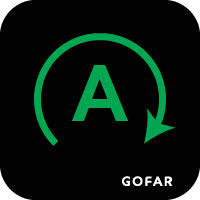
Start/Stop Warning Light
Indicator light turns on to inform the driver that Intelligent Stop / Start system is active and the engine has been shut down. Click

Speed Limiter
Indicator light means that the speed limiter function is activated. Click

Seat Temperature
Indicator light means that the air flow is distributed between front side window, windscreen and footwell de-misting vents. Click
Diesel-Powered Vehicle Symbols
One of the common diesel-powered car dashboard light symbols is the glow plug indicator. This lighting pre-glows when it is warming up and worn-out glow if there’s a plug issue.

Glow Plug Indicator
Indicator light means that the engine’s glow plugs are warming up and the engine should not be started until the light goes out. If it flashes, an issue has been detected, such as a worn out glow plug. Click

Fuel Filter Warning
Indicator light means that the diesel fuel filter is full, and needs to be emptied to avoid engine damage. Click

Exhaust Fluid
Indicator light means that the diesel exhaust fluid reservoir is low on fluid. Click

AdBlue Tank is Empty
Indicator light means you have to fill the tank with more exhaust fluid. Click

AdBlue Malfunction
Indicator light means either the AdBlue system is malfunctioning or the system is not filled with the standard liquid. Click

Water Fluid Filter Warning
Indicator light means water in fuel filter has reached maximum capacity. Drain the water from filter. Click
Your Questions Answered – View all

Why Is My Check Engine Light Still There?
You’ve got a check engine light warning on your dash. Now what? You must be worried. And that’s okay, because clearly your car is in trouble. Read more

Check Engine Lights: What to do and How to Fix Errors
Like most car warning lights, the check engine light is a yellow, orange, or red engine symbol that appears on your dash when your car’s system malfunctions. Read more

How to Check My Dashboard Lights for Errors
Perhaps unsurprisingly, a dashboard lights warning is a driver’s worst nightmare. First of all, it just pops on. No explanation whatsoever. Read more

Is Your Check Engine Light Flashing on the Dashboard?
News Flash: Failing to acknowledge a flashing light on your dashboard can get you stranded in the middle of nowhere or stuck on the side of a busy highway. Read more
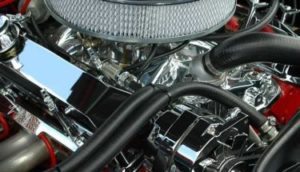
What Are the Most Common Check Engine Light Issues?
Fact: when the check engine light comes on it spells bad news. There’s something wrong under the hood. Read more
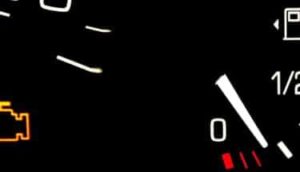
Can You Drive a Car with the Check Engine Light On?
You’re driving, when suddenly the dreadful yellow-orange Check Engine Light comes on! What should you do? Read more
Monitor engine faults every 2 seconds with GOFAR
- Alerts you when your car is sick and tells you how serious it is
- Helps you drive smarter and spend up to 30% less on fuel
- Free App + easy self-install + no tools needed
Check Your Car’s Compatibility
- Short message
- Comments This field is for validation purposes and should be left unchanged.
You have 0 item in cart.
You just added:
- Cart items: 1
- Cart Subtotal: $ 0
Need an extension cable? Want to go green? Choose from these handy products:
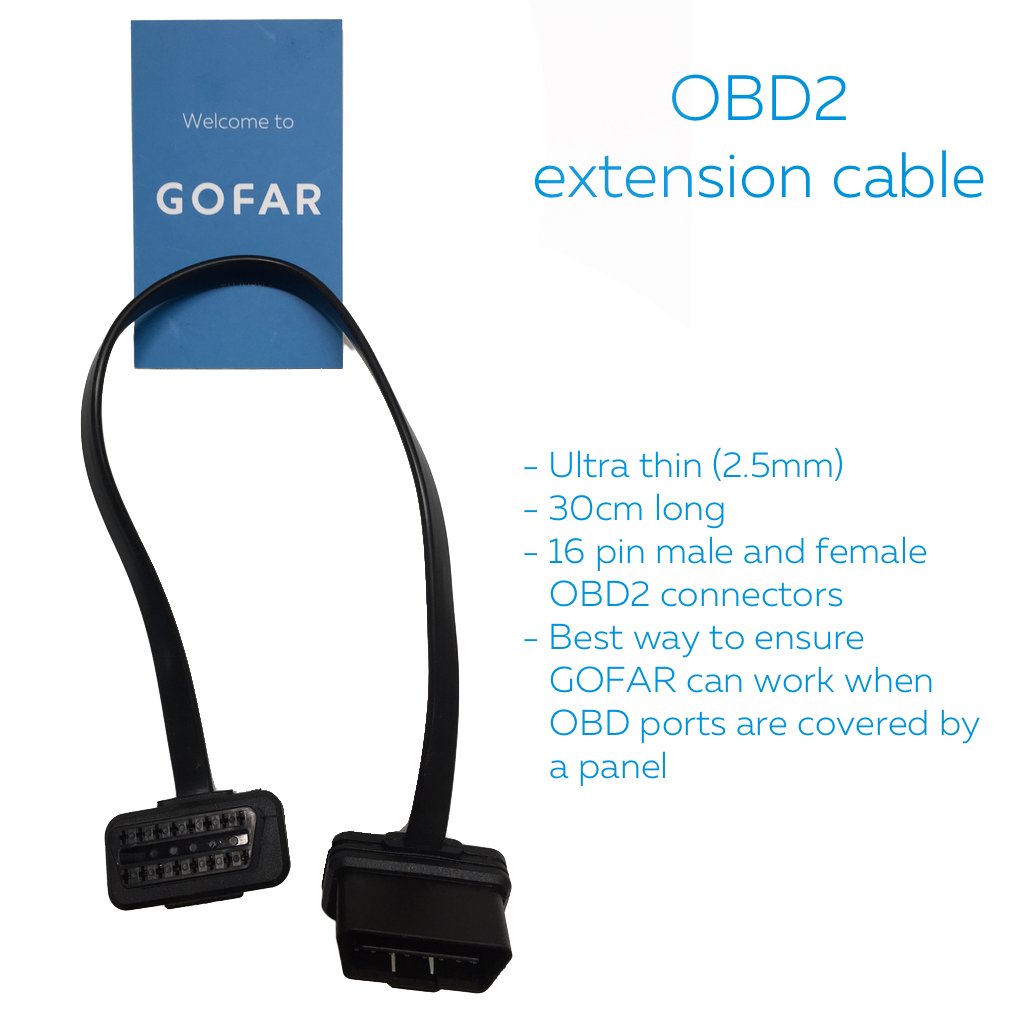
Dashboard Warning Lights: Is My Car Safe to Drive?
We all know someone who ignores their dashboard warning lights. Unfortunately, this can lead to vehicle failure and safety hazards on the road. Other drivers see dashboard lights and fear their car might not be safe enough to drive to a mechanic. Chapel Hill Tire is here with insight on what your dashboard warning lights mean and what you can do about them.
Check Engine Light
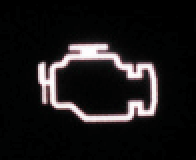
Perhaps the most famous and recognizable dashboard warning light is the check engine light.
As the name suggests, your check engine means a sensor detects an issue with your engine. The most common (and easy to fix) cause of a check engine light is a loose gas cap. Check to ensure your gas cap is tightly secured before worrying about your engine. Another common cause is a sensor issue, which requires sensor replacement. Beyond these issues, a check engine light could indicate a serious problem under your hood.
Is it safe to drive with your check engine light on? This depends on the cause of the check engine light. In mild cases, like a sensor issue, you should be safe to drive until you can visit a mechanic. However, in serious cases, it could lead to engine damage or failure if not addressed promptly. When you see your check engine light on, you should visit a mechanic as soon as possible.
Oil Change Warning Light
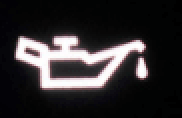
The dashboard light shaped like a gravy boat is your oil change warning.
Engine oil is essential for protecting your engine and preventing costly vehicle damage. Your vehicle requires regular replacements as oil becomes depleted and contaminated over time.
Is it safe to drive with your oil light on? Driving with your engine oil light on is a bit like playing with fire. Oil changes are inexpensive routine services, but skipping them risks serious and costly engine damage. It can also create potentially unsafe driving situations once that engine damage sets in. If you are driving with your oil change warning light on, you are hopefully on your way to a mechanic.
Dashboard Battery Warning Light
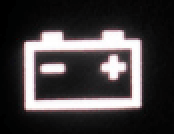
If you notice a small red light that looks like a battery illuminated in your dashboard, this indicates an issue with your battery or alternator.
Most frequently, this light means your battery is due for a replacement. Battery replacement is a routine service you will need roughly every 3 years.
Alternator issues are a bit more complicated. Your alternator is responsible for recharging your battery as you drive. It also helps power essential vehicle electrical elements, like your headlights. A professional mechanic will be able to diagnose your alternator troubles and work with you to arrive at a repair plan.
Is your vehicle safe to drive with the battery warning light on? When you are close to a battery replacement, your vehicle should still be safe to drive for a few days until you can visit a mechanic. If your schedule is too tight, simply have a mechanic come to you . However, if you choose to ignore your battery warning light, you will not want to get stranded with a dead battery . It is best to keep jumper cables or a battery pack in your car—just in case. Here is our 8-step guide to jump-starting your car .
If the issue is with your alternator, this is a different story. Faulty alternators could have your car dying in the middle of the road (rather than simply failing to start). Alternator troubles could also cause your headlights and other vehicle safety elements to turn off.
Windshield Washer Fluid Light
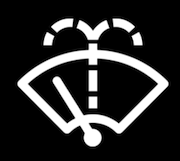
The dashboard warning light shaped like a windshield indicates low washer fluid.
This fluid is designed to help clear your windshields when bugs, debris, or other hazards impair your vision.
Is it safe to drive with the windshield warning light on? The windshield warning light lets you know your fluid is low, not depleted. You will be fine to continue driving—as long as you get it refilled before you run out entirely.
Seatbelt and Airbag Warning Light
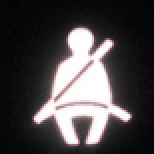
If you or your passengers ignore the seatbelt, it could trigger a dashboard warning light in your vehicle.
While this doesn’t present a vehicle concern, seatbelts are vital to keeping you safe during an accident. While it does not require a visit to the mechanic, skipping the seatbelt can earn you a ticket. If you need further encouragement, your car may also trigger a seatbelt warning noise that may persist throughout your trip.
A similar dashboard light is the airbag warning. This light often indicates an issue with your airbag system that may prevent it from deploying in an accident. In these cases, you can consult a mechanic to ensure your airbag is working safely.
Coolant Warning Light
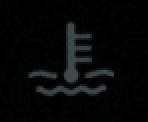
The small thermometer light (often with waves near the bottom) is your coolant warning.
This light is also commonly called a temperature warning, refrigerant warning, or radiator fluid warning. It is often a sign that your engine is getting too hot. It could also indicate that you are low on coolant .
Is it safe to drive with the thermometer warning light on? Driving with an overheated engine could create costly engine damage or even begin smoking. If your engine is overheating, pull over and give it a chance to cool down. Contact a mechanic for professional insight on whether or not it is safe to drive. Otherwise, you might need a tow service to bring it to the mechanic instead.
In a best-case scenario, the light is simply telling you that your coolant levels are low. In this case, it is safe to drive as long as you schedule a visit to the mechanic for a coolant flush. It is best not to wait when it comes to your radiator .
Exclamation Point in a Circle: Brake Warning Lights
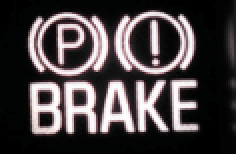
The bright red circle with an exclamation mark inside indicates an issue with your brake system.
This could be a routine warning or a sensor detecting depleted brake pads or low brake fluid.
Is it safe to drive with the brake warning light on? Your brakes are essential to your safety on the road. In most cases, you will need brake pad replacements to keep you safe on the road. You may also need a brake fluid replacement service. Regardless of the source of your brake problems, the sooner you get them serviced, the better.
Horseshoe Shaped Dashboard Light: Low Tire Pressure
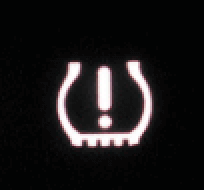
The horseshoe shape on your dashboard light (often with an exclamation point in the middle) indicates low tire pressure .
Low tire pressure happens naturally over time from driving. Cold weather also causes low air pressure as the air compresses inside of your tires. In a worst-case scenario, you may have a nail in your tire letting air out, which will require both a patch and refill. Driving with low tire pressure can cause poor fuel economy, present risks to your tires and rims, and impact your vehicle handling.
Is it safe to drive with your low tire pressure light on? Poor vehicle handling can present safety concerns—especially in inclement weather. You could also risk a tire blowout or rim damage. Thankfully, many mechanics make it easy to score free tire pressure refills. At Chapel Hill Tire, every oil change comes with free tire pressure checks and refills. You can also get free refills for the lifespan of your tires when you buy tire protection from our experts.
Chapel Hill Tire: Car Mechanic Services
If your dashboard warning light comes on, bring it to the experts at Chapel Hill Tire. We proudly serve the greater Triangle area with 11 locations across Raleigh, Apex, Durham , Cary , Carrboro, and Chapel Hill. You can browse our selection of coupons, deals, and discounts on top of our everyday low service prices. We invite you to make your appointment here online, or give us a call to get started today!
Back to Resources

Ultimate Guide To Marine Navigation Lighting
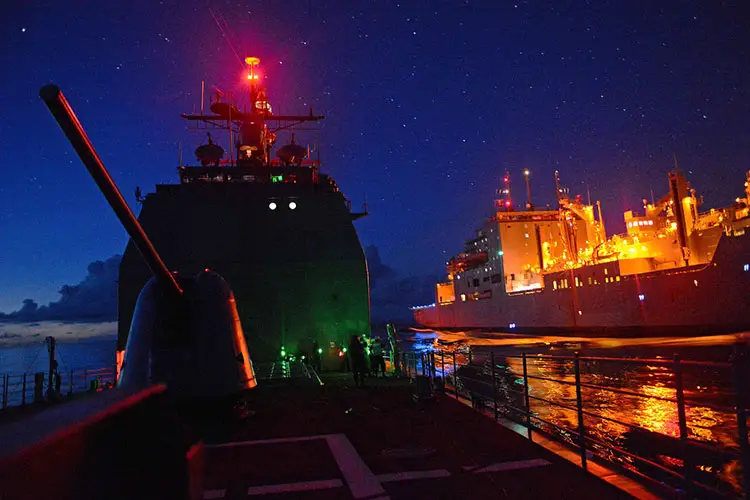
If you drive a car or even ride a bicycle, you might be well aware of the necessity of lighting systems (though in the second case the word ‘system’ doesn’t quite apply) for the safety of you and the people around you. The thing applies just as well for ships. But since they are much larger than a car, the lighting system or navigation lights on ships is a little bit more complicated as well. Marine navigation lighting is also one of the most critical aspects of nautical studies.
It is mandatory for boats of all sizes to have a navigation system . This is to make sure that the chances of any significant accident are minimized. The United States introduced the system in 1838, and the United Kingdom followed suit. Before being internationally adopted in 1897 suitable guidelines were established by the International Maritime Conference which was established in 1889. Three colors were chosen that were to be used for the light colors. They were red, green and white. This was based on a set of rules specified by the US and are followed around the world to this date.
This article discusses the different rules and regulations of using navigation lights, their importance, and also some basic marine navigation lighting systems along with their positions and ranges.
Marine Navigational Lights, Rules and Regulations
A standard pattern of marine navigation lighting is followed for the identification of both the vessel as well as the IALA buoyage system at night. If you are required to move from sea to a channel you need to have a list of all the IALA as well as the other fixed navigational lights that are visible on entering the channel. This includes distant lighthouses as well.
If you also make a note of the inland features like the radio and television transmitter masts it will benefit you because they act as good navigational aids due to their height and warning lights.
The helmsman should not be using any bright light source in the cockpit area and should rather take the aid of red lights and very dim white lights in the galley and navigation area. This is because he needs to preserve his night vision so that he can accurately interpret both the buoyage marine navigation lights as well as the boat navigation lights of other vessels.
The nautical almanacs contain the details of each and every visible maritime light signal coming from navigational markers that are both inside and outside the channel.
All the details about any particular light can be found in a published list or on a marine navigational lights chart: its color, period, and in some cases even the elevation and range of the beacon. Use the chart to keep a tag on the lights you are passing by putting a tick mark on the lights that you are about to pass and as the boat sails past, the tick is checked.
You will get two visual clues to figure out how far you are away from a buoy. The light will elevate from the horizon at 0.5 nm and at about 200m, the light will reflect on the surface.
Position of Boat Navigation Lights
Most of the variations that can be found in the different vessels can be read about in most almanacs. At the very basic level, a vessel needs to show a red light to port and green light to starboard. Depending on the size of the vessel, one or more colored or white lights are used as well.
For vessels that are 12 ft in length or shorter, the navigation lights must be visible from a range of one nautical mile and for the ones that are longer than 12 meters the required visibility range is 2 nautical miles. From 5 degrees above to 5 degrees below the horizontal happens to be the required minimum intensity in a vertical sector.
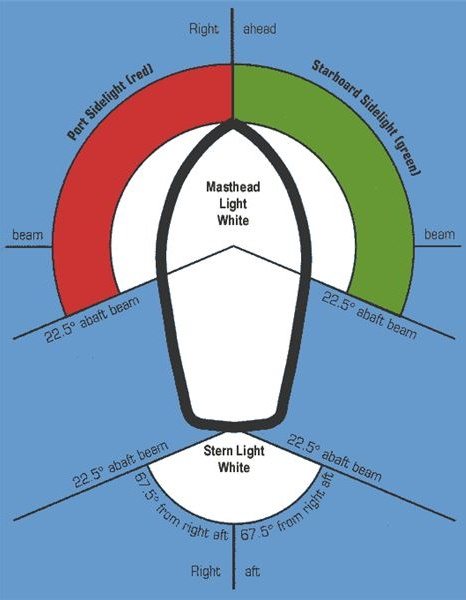
International Navigation Rules state that the boat navigation lights should be placed above the uppermost continuous deck. In case separate fixtures are used for the red and green sidelights, the masthead or all-round white light is placed as close as possible to the vessel’s fore and aft centerline. The masthead or all-around light needs to be positioned at least 1 m or 3.3 ft above the sidelights.
Following are the basic positions of navigational lights. We will discuss the same in greater detail ahead.
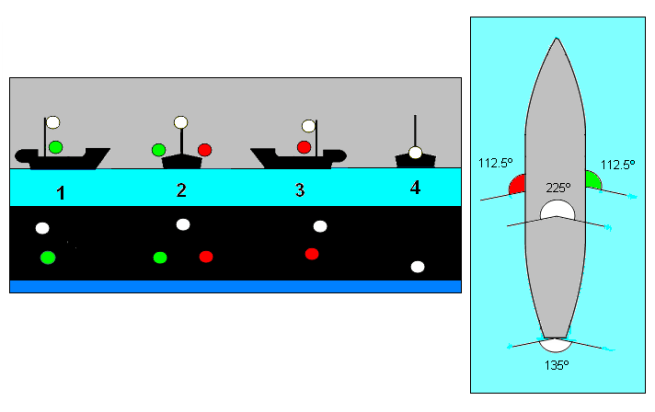
Also read: What Is A Marine Sextant?
Boat Navigation Light Regulations
Several rules and specifications are related to the type, size, layout, arc, and distance of visibility of boat navigation lights used by all vessel types which are collectively known as the International Regulations for Preventing Collisions at Sea or COLREGs . The navigational lights used are known as ‘COLREG lights and shapes. A boat might be anchored or underway, under sail or power, or fishing or trawling. These various situations can be communicated through multiple combinations of boat navigational lights.
In addition to the primary navigation lights, vessels may also display one or more steaming lights. These lights are very useful for it gives details about the various aspects of the ship like whether it is in the sail or under power, the direction in which it is going and, in some cases, even the size of the vessel. If a ship is engaged in a specific task that might involve certain restrictions, that too can be indicated with some extra boat lights.
Always maintain the lighting system and display the correct navigation light combination to make other vessels in the vicinity aware of your course and state as to whether your vessel is under power or not. If you follow this a considerable amount lowers the chances of a collision. Here is a list that you might use to familiarise yourself with the basics of the lighting system.
- Basic Navigation Light White Light : Small dinghies that are 7m or less in size are required to carry a torch having a white light that can be flashed when needed.
- All-Round White Light: An all-round white light is expected to be displayed by a small boat, up to 7ft long that is under power and can go beyond 7 knots of speed. This light must be visible at an angle of 360 degrees and from two miles away. An all-around white light is also used when the boat or vessel is at anchor but not at a designated anchoring area. This is to make sure that the ship is visible to all the nearby ships to avoid any accidents.
- Stern and Combined Side Lights : A stern light is a white light that is installed at the end of a boat. A vessel that is over 7 m or 23 ft in length is expected to show red and green sidelights when sailing. Each of these lights needs to cover an arc of 112.5°. The sidelights may be combined in one lantern at the bow when below 25 m or 65 ft. The white stern light can be seen over an arc of 135°. These lights need to be visible from a distance of a mile and need to be placed 39 inches below all white lights for boats of lengths equal to or less than 12 ft.
- Masthead Light : A combination of sidelight and stern light in a tricolor combination may be used sailing yachts of heights 20 m or lower. A masthead light is required by vessels of lengths between 39.4 ft and 65.6 ft. It is placed in the masthead whose height provides excellent visibility. Still, stern lights and sidelights should be fitted separately in case of or use under power along with steaming light. This kind of light needs to be visible across an angle of 225 degrees and from a minimum distance of 2 miles.
- Separate Lights : The displaying of the tricolor masthead light is not allowed in the case of yachts that are longer than 20 m or 65 ft. Instead, they use them separately. Often on large sailing vessels, these all-around, red over green lights are present. These red and green sidelights need to be visible from a distance of one mile and across an angle of 112.5 degrees.
- Steaming Lights Combined Lights : A combination of the masthead and stern light are used in the case of power crafts that are less than 20 m or 65 ft in length. The arrangement is present at the bow.
- Single Steaming Light : Visible over a 225 degrees arc, a masthead steaming light is used by power-driven vessels that are up to 50 m or 160 ft long. Separate stern lights and sidelights are used in case of a length exceeding 20 m or 65 ft.
- Two Steaming Lights: Power-driven vessels that span over 50 m or 160 ft in length display two masthead steaming lights. The forward light placed lower than the aft light with both of them being visible over an arc of 225° with the sidelights and separate stern light.
The area of the nautical lighting system is a precise business and requires some amount of study and a good deal of responsibility. It is because its application forms a core element in safe marine navigation.
Similar Posts
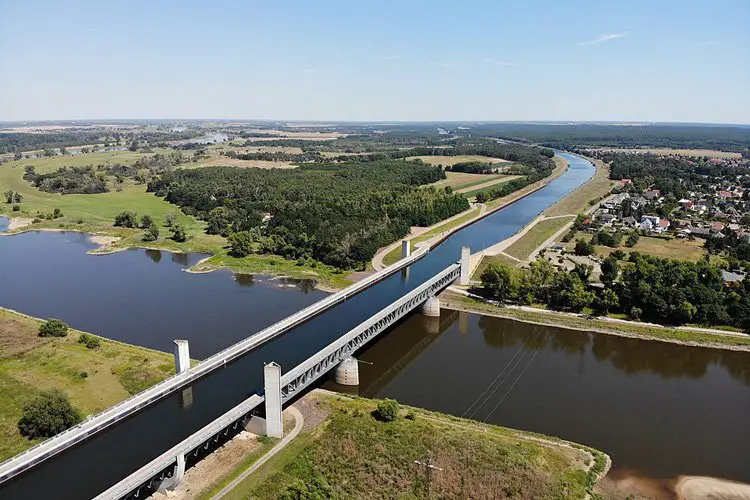
Amazing Magdeburg Water Bridge: Longest Navigable Aqueduct in the World
The Magdeburg Water Bridge in Germany is the longest navigable aqueduct that connects the Elbe-Havel Canal to the Mittelland Canal, crossing over the Elbe River. What comes to your mind first when we say a bridge? Right, the first thing that comes to our mind is that a Bridge is a structure that acts as…
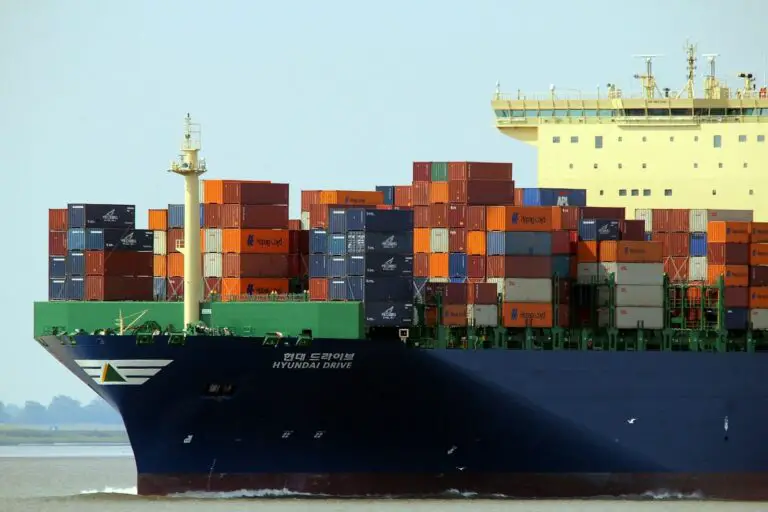
10 Largest Container Shipping Companies In The World
Want to know the largest container shipping companies? We have compiled the latest list of shipping companies that dominate the industry. It won’t be a stretch to say that container ships form the backbone of world commerce. These ships enable the movement of a vast amount of goods to be through the ocean quickly and…
![Straddle Carriers [ULTIMATE GUIDE] 9 Straddle Carriers [ULTIMATE GUIDE]](https://www.maritimemanual.com/wp-content/uploads/2021/07/straddle_carrier.jpg)
Straddle Carriers [ULTIMATE GUIDE]
A straddle carrier or also known as a straddle truck is a lifting apparatus. Straddle carriers helps in lifting the containers for stacking them on the terminals. It ensures easy and smooth movement of containers from one place to another. The working of a straddle carrier is different from that of a conventional truck which…
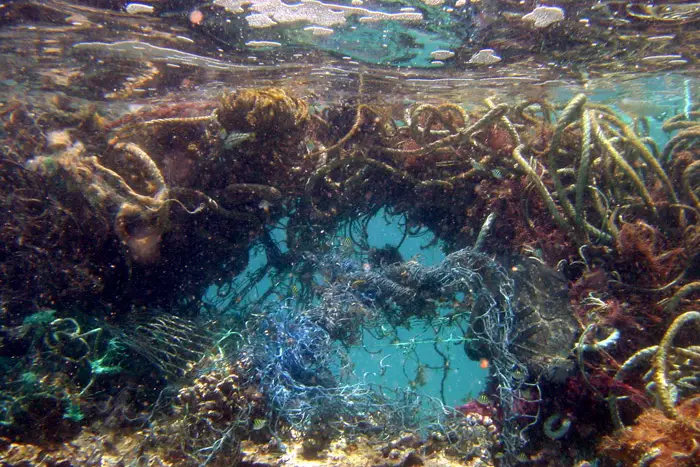
What is the Great Pacific Garbage Patch? Facts & Myths
The Great Pacific Garbage Patch (GPGP) is a gigantic collection of marine debris and waste found in the middle of the North Pacific Ocean. It is also known as Pacific Trash Vortex. The main constituents of this garbage are plastic debris that the ocean currents collect. GPGP is also called as Pacific trash vortex. Great…
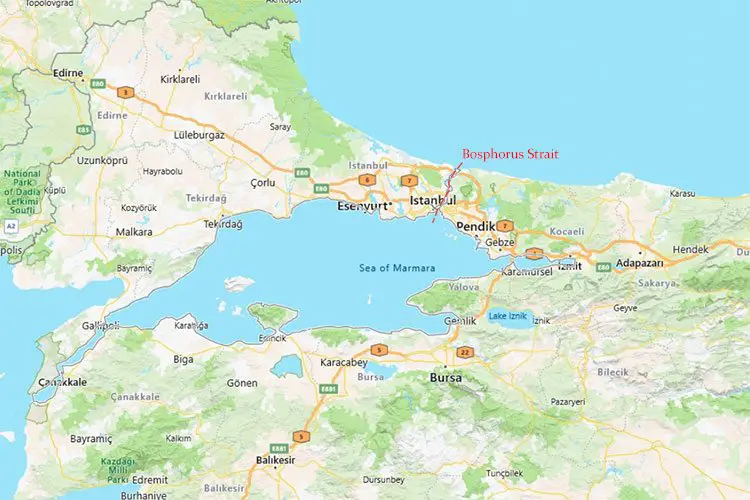
Bosphorus Strait: 10 Mind-Blowing Facts
The Bosphorus strait or also known as the Strait of Istanbul is located in the northwestern part of Turkey and connects the Sea of Marmara with the Black Sea. It is a very narrow and natural strait but holds an international significance as it connects different seas making itself an important shipping route. The strait…
Top 10 Ship Tracking Websites
With the internet, communication, and GPS satellites no part of the world has been left untouched. We can get real-time information whenever and wherever we want it. Thus, the process of tracking ships has also become very easy and accurate as there are several ship tracking websites that allow you to do just that. Most…
Leave a Reply Cancel reply
Your email address will not be published. Required fields are marked *
Save my name, email, and website in this browser for the next time I comment.
This website uses cookies to improve your experience. We'll assume you're ok with this, but you can opt-out if you wish. Read More
Sailboat Navigation Lights: A Guide to Safe Nighttime Sailing
by Emma Sullivan | Jul 26, 2023 | Sailboat Maintenance

==Short answer sailboat navigation lights:== Sailboat navigation lights are essential safety features that help vessels communicate and avoid collisions at night. These lights, such as the red and green sidelights and white stern light, allow sailors to determine the direction and status of approaching boats.
Understanding the Importance of Sailboat Navigation Lights
Sailing, with its air of romance and adventure, is a timeless pursuit that has captured the hearts of seafarers for centuries. While sailing enthusiasts revel in the sense of freedom and connection with nature that this activity provides, it is crucial to recognize that safety should always be a top priority when out on the open water. Among the many precautions taken to ensure safe navigation, sailboat navigation lights play an essential role.
These lights serve as beacons in the darkness, guiding both sailors and other vessels on their watery voyages. They are particularly vital during low visibility conditions such as fog, twilight, or nightfall when discerning a sailboat’s presence can be challenging. By understanding the importance of sailboat navigation lights, sailors can take proactive steps towards avoiding collisions and mishaps while enjoying their time at sea.
First and foremost, these lights serve as a communication tool between vessels. Just as traffic signals guide drivers on roads, sailboat navigation lights communicate a vessel’s navigational status to others nearby. These lights convey critical information about a boat’s direction of travel and whether it is under power or relying solely on wind propulsion. This enables other boats to predict potential collision courses and adjust their own paths accordingly.
In terms of regulatory compliance, having properly functioning navigation lights is not just recommended; it is required by international maritime laws like The International Regulations for Preventing Collisions at Sea (COLREGS). These regulations provide clear guidelines for different types of watercraft around the world to standardize safety measures. Following these rules ensures that every sailor speaks the same language when at sea, diminishing misunderstandings and encouraging mutual respect among mariners.
Furthermore, sailboat navigation lights contribute significantly to situational awareness – an invaluable asset in any seafaring endeavor. By displaying specific colors and configurations such as red/green sidelights and a white stern light visible from 135 degrees, sailors can discern the orientation of approaching vessels even in complete darkness. This knowledge empowers sailors to make informed decisions about altering their course or speed to avoid potential dangers.
In addition to enhancing navigation safety, sailboat navigation lights also add a touch of elegance and charm to nighttime voyages. Picture yourself sailing under a summer moonlit sky, with the soft glow of your vessel’s navigation lights casting mesmerizing reflections on the water’s surface. These lights not only provide reassurance but also create an enchanting ambiance for both sailors and onlookers.
While it may be tempting to dismiss the importance of sailboat navigation lights as just another cumbersome boat regulation, understanding their indispensable role is crucial for every sailor’s peace of mind and for ensuring uninterrupted enjoyment of our beloved pastime. So next time you set sail, remember that these little beacons serve as more than mere accessories – they are your allies in darkness, silently guiding you towards safe passages and unforgettable adventures on the open sea.
How to Properly Install and Operate Sailboat Navigation Lights
When it comes to sailing, safety should always be a top priority. And one of the essential safety measures on a sailboat is proper navigation lighting. Sailboat navigation lights help other vessels identify your boat’s position and course, especially during low visibility conditions or at night. In this blog post, we will guide you through the correct installation and operation of sailboat navigation lights to make your sailing adventures safe and enjoyable.
Installing sailboat navigation lights may seem like a simple task, but there are several key factors to consider for optimal functionality. First and foremost, familiarize yourself with international regulations regarding navigation lights. These regulations ensure consistency across different countries and improve communication between vessels on the water.
Before starting the installation process, carefully choose high-quality LED lights specifically designed for sailboats. LEDs offer numerous advantages over traditional incandescent bulbs, including energy efficiency, higher light output, longer lifespan, and reduced heat emission. Additionally, LEDs are more durable and resistant to vibrations commonly experienced while sailing.
To begin installing your sailboat navigation lights:
1. Determine the appropriate locations: Positioning your navigation lights correctly is crucial to maximize their visibility and effectiveness. Refer to your boat’s owner’s manual or consult with a marine electrician to identify the ideal mounting points for each light.
2. Prepare wiring routes: Plan out the wiring routes before drilling any holes or mounting fixtures. Concealing wires within the boat’s structure not only enhances aesthetics but also minimizes potential damage caused by exposure to external elements.
3. Drill strategically: Using an appropriately sized drill bit, carefully create mounting holes following the instructions provided by the manufacturer of your chosen navigation lights.
4. Connect electrical components: Install a waterproof junction box near each light fixture to protect wires from moisture and corrosion. Make connections following color-coded standards (red wire – positive; black wire – negative), ensuring proper polarity is maintained throughout the circuit.
5. Securely attach fixtures: Once all wiring connections are made, attach the navigation light fixtures to their designated mounting positions. Double-check that they are secure and properly aligned to maintain optimal visibility.
With your sailboat navigation lights installed, it’s time to understand their operation. Different situations call for specific combinations of lighting:
1. Underway with power: When sailing under engine power, display both a red (port side) and a green (starboard side) light visible from dead ahead to 22.5 degrees abaft each beam. A white stern light should also be shown.
2. Sailing without power: When solely relying on wind propulsion, display just the red and green sidelights in the same manner as during powered navigation.
3. At anchor: If you’re moored or anchored, only exhibit an all-around white light at a location high enough to illuminate unobstructed from every angle.
4. Restricted maneuverability: In situations where your sailboat’s maneuverability is impaired (e.g., towing another vessel), use three shapes—two balls vertically aligned above one diamond—to indicate restricted movement.
Lastly, always ensure proper maintenance of your sailboat navigation lights:
1. Regularly inspect for damage: Routinely check for signs of wear and tear on the electrical connections, housing seals, lenses, and reflectors. Replace any damaged components promptly.
2. Clean for maximum visibility: Keep lenses clean from dirt, grime, salt residue, or any other obstructions that could limit the effectiveness of your navigation lights.
3. Carry spare bulbs/batteries: Be prepared by carrying backup LED bulbs or batteries in case of failure during extended voyages.
By following these installation steps, understanding proper operation techniques according to maritime regulations, and maintaining your navigation lights diligently; you can cruise confidently knowing your sailboat is equipped with highly visible and functional navigation lighting system—an important feature enhancing safety while enjoying the open water at any time of day or night. So, set sail with peace of mind and navigate the seas safely while embracing the thrilling adventures that await you!
Step-by-Step Guide: Setting Up Sailboat Navigation Lights for Safe Sailing
Welcome aboard, fellow sailors! Today, we are going to dive into the nitty-gritty of setting up sailboat navigation lights for safe sailing. As you know, proper navigation lights are an essential part of ensuring your safety on the water, especially during low-light conditions and at night. So grab your cup of coffee, sit back, and prepare to learn how to illuminate the seas like a professional.
Step 1: Know Your Lights Before we jump into the technicalities, let’s familiarize ourselves with the different navigation lights required on a sailboat. These include the red port light on the left side, green starboard light on the right side, white stern light at the rear, and if our boat is longer than 20 meters (or 65 feet), a white masthead light at its highest point. Having this knowledge sets you up for success in navigating effectively while abiding by maritime regulations.
Step 2: Choose Your Lighting System Now that we’ve covered the basics, it’s time to decide which lighting system is most appropriate for your sailboat. You have two options: traditional incandescent bulbs or modern LED lights. While both serve their purpose well, LED lights are more energy-efficient and tend to last longer – a win-win situation!
Step 3: Gathering Materials To ensure smooth sailing throughout this process (pun intended), gather all necessary materials beforehand. This includes navigation lights (either incandescent bulbs or LED lights depending on your preference), wiring connectors, heat shrink tubing (to protect connections from moisture), electrical tape, wires (preferably color-coded for easy identification), wire strippers/cutters, and mounting hardware suitable for your boat.
Step 4: Planning Placement Consideration of placement plays a crucial role in setting up navigation lights effectively. Ensure visibility from all angles without obstructing other boat equipment or compromising aesthetics onboard. Take note of any manufacturer guidelines provided with your purchased lights for optimal placement. Remember, safety doesn’t mean sacrificing style!
Step 5: Wiring Your Lights Now we’re getting hands-on! Let’s start with the stern light. Attach the wires of your chosen light to the existing electrical system using appropriate connectors and ensure a secure connection. Utilize heat shrink tubing and electrical tape to safeguard against any moisture-induced malfunctions. Repeat this process for both port and starboard lights.
Step 6: Don’t Forget the Masthead Light If your sailboat exceeds 20 meters in length, you’ll need a masthead light too. Carefully mount this light on top of your mast using suitable hardware. Then, run additional wires through the mast to connect it securely with your electrical system.
Step 7: The Proof is in Testing After successfully wiring all navigation lights, it’s time for a crucial step – testing! Double-check that all connections are secure and operational before venturing out onto the open water. Be meticulous; don’t let a faulty bulb ruin your sunset cruise or impede your journey under a moonlit sky.
Congrats, sailors! You’ve now mastered the art of setting up sailboat navigation lights for safe sailing. Remember, maintaining these lights should be an essential part of regular boat maintenance as well. With proper illumination, maritime rules adhered to diligently, and cautious seamanship skills mastered, you can enjoy many breathtaking nights on tranquil waters without compromising safety. So go forth into the starry night with confidence and raise anchor towards new horizons! Bon voyage!
Frequently Asked Questions About Sailboat Navigation Lights, Answered!
Title: Frequently Asked Questions About Sailboat Navigation Lights, Answered!
Introduction: Navigating a sailboat safely and responsibly requires understanding and adhering to various rules and regulations. One vital aspect of sailing is ensuring proper use of navigation lights. These lights not only aid in visibility but also help communicate with other vessels on the water. In this blog post, we will delve into frequently asked questions about sailboat navigation lights, offering detailed professional answers infused with wit and clever insights.
1. Why are navigation lights necessary for sailboats? Navigation lights serve as visual signals that enable sailors to identify vessel types, positions, and movements at night or in low visibility conditions. They are crucial for promoting safety on the water by helping prevent collisions and aiding in the communication between boats.
2. What are the different types of navigation lights found on a sailboat? Sailboats typically feature three main navigation lights: red (portside), green (starboard side), and white (stern light). The red light tells other sailors that your boat’s portside is facing them, while the green light indicates that your starboard side is visible. The white stern light illuminates the rear of your vessel, making it easier for others to determine your direction of travel.
3. When should I turn on my sailboat’s navigation lights? According to international rules of collision avoidance at sea, all vessels must show proper navigation lighting between sunset and sunrise or during periods of restricted visibility such as fog or heavy rain showers. It’s essential to remember that even during daylight hours if visibility drops due to poor weather conditions, switching on navigational lights can greatly enhance safety.
4. Are there any additional requirements regarding sailboat navigation lighting? Yes! Aside from displaying the three main distinct navigation lights mentioned above, it is crucial for sailboats under power or motorsailing – using engine power alongside sails – to display an additional white forward-facing masthead light apart from the stern light. This masthead light helps identify the sailboat as a power-driven vessel, providing further clarity to nearby boaters.
5. Can I use LED lights for navigation purposes on my sailboat? Absolutely! In fact, LED lights are highly recommended for their energy efficiency and prolonged lifespan compared to traditional incandescent bulbs. However, it is essential to ensure that any LED navigation lights you use adhere to relevant maritime regulations concerning color, visibility range, and intensity.
6. How can I check if my sailboat’s navigation lights are working correctly? Regular maintenance and testing of your navigation lights are vital to guarantee their functionality when needed the most. Before every outing, visually inspect each light for signs of damage or corrosion. Additionally, switch on all navigational lights while docked or at anchor to verify they illuminate brightly according to the appropriate standards laid out in navigational lighting regulations.
Conclusion: Understanding sailboat navigation lighting not only ensures your safety but also promotes effective communication with other vessels on the water. By knowing when and how to properly utilize these lights, you contribute to maintaining a harmonious sailing environment. Remember, navigating with wit means being informed and cleverly enhancing your skills as a sailor while keeping safety at the forefront of your adventures!
Top Tips and Best Practices for Maintaining Sailboat Navigation Lights
Maintaining Sailboat Navigation Lights: Expert Tips and Best Practices
Picture this – you’re out on the open water, gliding along with the wind in your sails. As the sun dips below the horizon, darkness begins to envelop your sailboat. This is when maintaining proper navigation lights becomes paramount for both safety and legal compliance. In this blog post, we will dive deep into top tips and best practices for ensuring that your sailboat’s navigation lights are not only functioning but also showcasing their brilliance.
1. Regular Inspections are Key: To ensure your sailboat navigation lights are in prime condition, regular inspections should be conducted. Make it a habit before every trip to thoroughly examine all lights, from bow to stern. Look out for any loose connections, cracked lenses, or water intrusion that could hamper their effectiveness.
2. Ensure Proper Power Supply: One common issue faced by sailors is inadequate power supply to navigation lights, leading to dimness or complete failure at crucial times. Check that the wiring system is correctly connected and working optimally. Additionally, consider installing a voltage monitor or battery analyzer to keep tabs on power levels during extended journeys.
3. Choose LED Lights: When it comes to choosing sailboat navigation lights, opt for LED technology without hesitation. LEDs offer brilliant luminosity while consuming minimal power compared to traditional incandescent bulbs. Their longevity and durability make them ideal for equipping your vessel’s masthead light, sidelights, stern light, and anchor light.
4. Cleaning is Essential: Navigation lights on a sailboat accumulate dirt and grime over time due to exposure to various elements like saltwater spray or bird droppings (we all know how seagulls love making our boats their restroom). Regularly clean the lenses with a soft cloth and mild soap solution followed by drying with a lint-free towel. Keeping them crystal clear will maximize their output and visibility range.
5. Protect Against Moisture: Water ingress can be a persistent menace, harming the functionality of your sailboat’s navigation lights. To combat this, ensure watertight seals around light fixtures and wiring connections. Applying silicone lubricant or dielectric grease to connectors further enhances protection against moisture.
6. Carry Spare Bulbs and Fuses: Murphy’s Law states that anything that can go wrong, will go wrong – especially in the middle of nowhere. Imagine how disheartening it would be if one of your navigation lights suddenly fizzles out on a moonless night! Always carry spare bulbs and fuses suited for your specific lighting system to avoid such predicaments and keep your journey uninterrupted.
7. Stay Familiar with Navigation Regulations: Being updated on marine regulations regarding navigation lights is not only essential for your safety but also ensures compliance with local laws. These regulations dictate the placement, colors, and timings for displaying navigational lights based on different conditions such as underway, anchored, or sailing near other vessels at night.
In conclusion, maintaining sailboat navigation lights might seem like a mundane task; however, its significance cannot be undermined when it comes to safety during nighttime voyages. Regular inspections, adequate power supply, LED technology adoption, cleanliness, moisture protection, carrying spare bulbs/fuses, and adhering to maritime regulations should become second nature for any seasoned sailor. By following these top tips and best practices meticulously, you’ll be able to navigate the vast expanse of dark waters with confidence while ensuring a safe voyage each time.
Exploring Different Types and Designs of Sailboat Navigation Lights
When it comes to sailing at night, having the right navigation lights on your sailboat is absolutely crucial. Not only do they help you stay safe and avoid collisions with other vessels, but they also ensure that you are compliant with maritime regulations. In this blog post, we will be exploring different types and designs of sailboat navigation lights, so you can make an informed decision for your own vessel.
One of the most common types of sailboat navigation lights is the sidelight. These lights are usually mounted on either side of the boat and emit a green light on the starboard (right) side and a red light on the port (left) side. The purpose of these lights is to signal the direction in which your boat is moving to other vessels in the vicinity. Additionally, sidelights should be visible at a distance of at least two nautical miles, ensuring that other boats have ample time to react accordingly.
Another important type of navigation light for sailboats is the sternlight. As its name suggests, this light is mounted at the back or stern of the boat and emits a white light. The sternlight helps other vessels determine if you are moving away from them or approaching them from behind. It should be visible from a distance of at least two nautical miles as well.
In addition to sidelights and sternlights, sailboats also require an all-round white light, commonly known as an anchor light. This light serves as both an anchoring indicator and a warning signal to other boats that your vessel isn’t under power and may be stationary. Typically mounted atop the mast or another elevated point on the sailboat, this white light must be visible from all directions within two nautical miles.
Now that we’ve covered the main types of sailboat navigation lights, let’s delve into their designs. While traditional incandescent bulbs were once widely used for their simplicity and affordability, LED technology has revolutionized marine lighting. LED navigation lights are highly energy-efficient and have a considerably longer lifespan compared to incandescent bulbs. Additionally, LEDs emit a bright and focused light, making your sailboat more visible to others even in adverse weather conditions.
Furthermore, many LED navigation lights come with built-in features that enhance safety and convenience. Some models have automatic sensors that adjust the brightness of the lights depending on the ambient lighting conditions. This means that if you’re sailing during twilight or dawn, when visibility is reduced, these lights will automatically become brighter for better detection by other vessels.
Moreover, some innovative designs include combination lights that incorporate both sidelights and sternlights in one compact unit. These multifunctional lights save space on your boat while still ensuring compliance with regulations. Additionally, there are folding or telescopic navigation lights available that can be easily stowed away when not in use, further optimizing your deck space.
In conclusion, choosing the right types and designs of sailboat navigation lights is crucial for safe night sailing and regulatory compliance. Sidelights, sternlights, and anchor lights are essential components of any sailboat’s lighting system. Consider opting for energy-efficient LED technology that offers enhanced visibility and longevity compared to traditional incandescent bulbs. Moreover, explore innovative designs such as combination lights or folding options to optimize space onboard your vessel. By equipping your sailboat with the right navigation lights, you can navigate confidently through the darkness while captivating other sailors with your illuminated elegance on the open sea!
Recent Posts

- Sailboat Gear and Equipment
- Sailboat Lifestyle
- Sailboat Maintenance
- Sailboat Racing
- Sailboat Tips and Tricks
- Sailboat Types
- Sailing Adventures
- Sailing Destinations
- Sailing Safety
- Sailing Techniques

- Forums New posts Unanswered threads Register Top Posts Email
- What's new New posts New Posts (legacy) Latest activity New media
- Media New media New comments
- Boat Info Downloads Weekly Quiz Topic FAQ 10000boatnames.com
- Classifieds Sell Your Boat Used Gear for Sale
- Parts General Marine Parts Hunter Beneteau Catalina MacGregor Oday
- Help Terms of Use Monday Mail Subscribe Monday Mail Unsubscribe
Engine Panel red warning lights
- Thread starter Neasden
- Start date Aug 8, 2020
- Hunter Owner Forums
- Ask A Hunter Owner
Ed Caldwell
Oil Can light: low oil pressure Battery light: Alternator is not charging Thermometer: Coolant high temperature

SBO Weather and Forecasting Forum Jim & John
Neasden said: Oil Can light: - Related to oil but is it low oil pressure or oil level ? Battery light: - Related to Alternator and lights when the Alternator is not charging ? Thermometer: - Related to coolant but don't know if it is low coolant level or Coolant high temperature ? Click to expand
Welcome to the group! Lots of great info here.. check out the "Owner Resources" section and "General Downloads" also check out the model specific stuff for your 340.. Oil can is "Low Oil Pressure" it will illuminate and sound the alarm when the engine is not running.. it should turn off as soon as oil pressure builds as the engine spins. it will come back on when you shut down the engine. Thermometer is "High Engine Temperature" Illuminates and sounds alarm when the coolant temperature is too high.. doesn't on startup.. Battery is same as car, alternator not charging.. usually not hooked to the alarm but illuminates when no charge as in engine off.. When you turn the key on, it powers up the circuits; the pressure and temp lights are turned on by the sensor grounding the 12 V circuit, turning on the horn alarm.. HAPPY sailing !! and again, Welcome
Thank you everybody for your help. I will now rest a little easier when our red lights flicker.
Richard19068
- This site uses cookies to help personalise content, tailor your experience and to keep you logged in if you register. By continuing to use this site, you are consenting to our use of cookies. Accept Learn more…

What is a Properly Lit Sailboat at Night? (A Guide to Safety Regulations)

Have you ever been out on the open water and seen a sailboat with its lights on at night? It’s a beautiful sight to behold.
But did you know that there are specific safety regulations in place for properly lit sailboats? In this guide, we’ll be looking at the importance of having a properly lit sailboat, what types of lights are needed, how to install them, and how to test for proper operation.
Let’s get started and learn how to stay safe on the waters!
Table of Contents
Short Answer
A properly lit sailboat at night is a boat that is equipped with the correct navigation lights, which are required by law.
These lights must be visible for two miles and should include a green light on the starboard side, a red light on the port side, and a white light aft.
Additionally, the boat must also have a white masthead light that is visible for three miles.
The masthead light should be mounted at least two meters above the hull.
What Are the Safety Regulations for Properly Lit Sailboats?
When it comes to sailing at night, safety is of the utmost importance.
Properly lit sailboats ensure that they are visible to other boats, which reduces the risk of collisions and other accidents.
In order to ensure that a sailboat is properly lit at night , there are certain safety regulations that must be followed.
First and foremost, the sailboat must have the correct lighting equipment installed and in good working order.
This includes running lights (red and green lights found at the bow and stern of the vessel), an anchor light (a white light mounted on the masthead or the bow of the vessel), a stern light (a white light placed at the stern of the vessel), and a masthead light (a white light placed at the highest point on the vessel).
The running lights, anchor light, and stern light must be visible for at least 3 miles in clear conditions.
This allows other boats on the water to easily spot the sailboat, even in the dark.
The masthead light must be visible for at least 2 miles in clear conditions.
This ensures that the sailboat is easily seen from all directions.
In addition to having the correct lighting equipment, sailboats must also be equipped with a white all-round light.
This light must be visible for at least 2 miles in clear conditions and must be mounted on the mast at least 9 meters (or 30 feet) above the waterline.
The all-round light is an important part of a sailboats lighting system as it allows other boats to easily spot the sailboat from any direction.
These are just a few of the safety regulations that must be followed when it comes to properly lit sailboats.
Following these regulations will help to ensure that a sailboat is visible to other vessels on the water and will help to reduce the risk of accidents and collisions.
It is important that all sailors understand and adhere to these regulations in order to remain safe on the water.
Types of Lights Needed for Proper Lighting

When it comes to lighting a sailboat at night, there are a few key components that must be in place in order to ensure the safety of the vessel and the crew.
The most important of these components is the correct type of lighting equipment.
This includes various running lights, anchor lights, masthead lights, and stern lights.
Running lights are the red and green lights that are mounted on the bow and stern of the vessel, and are used to show the direction of travel of the boat.
They must be visible for 3 miles in clear conditions, making it easier to spot the boat in the dark.
Anchor lights are white lights that are mounted on the masthead or the bow of the vessel, and are used to show that the boat is anchored.
They must also be visible for 3 miles in clear conditions.
The stern light is a white light placed at the stern of the vessel.
This is used to show the direction of travel of the boat and should also be visible for 3 miles in clear conditions.
Finally, the masthead light is a white light placed at the highest point on the vessel.
This light is used to help identify the boat to other vessels on the water, and must also be visible for 3 miles in clear conditions.
Having all of these lights in good working order is essential for the safety of the boat and the crew.
It is important to make sure that all lights are visible from a distance of 3 miles in clear conditions, as this will make it easier to identify the boat in the dark.
It is also important to make sure that all lights are regularly inspected and maintained in order to ensure that they are in good working order.
How to Install the Lights
Installing the lights for a properly lit sailboat at night is an essential part of staying safe while sailing.
It is important to ensure that all of the lights are in good working order and that they meet the safety regulations for visibility.
The first step is to select the right lights for your vessel.
There are two main types of lights running lights and anchor lights.
Running lights are the green and red lights found at the bow and stern of the vessel, while anchor lights are white lights mounted on the masthead or bow of the vessel.
Once the lights are selected, the next step is to install them.
Start by attaching the anchor light to the masthead or bow of the vessel.
The anchor light should be securely mounted and wired in accordance with the manufacturers instructions.
Next, attach the stern light at the stern of the vessel.
This should also be securely mounted and wired in accordance with the manufacturers instructions.
Finally, attach the running lights.
These should be mounted at the bow and stern of the vessel.
It is important to test the lights after installation to make sure they are working properly.
Make sure that the lights meet the visibility requirements of 3 miles in clear conditions, as this is the minimum distance that the lights must be visible from.
Once the lights are installed and tested, youre ready to set sail in the dark!
Importance of Properly Lit Sailboats

When it comes to sailing, safety is of the utmost importance.
This is why it is essential for all sailboats to be properly lit at night.
Having the correct lighting equipment installed and in good working order is a critical component to ensure visibility and the safety of everyone on the water.
Not only does having properly lit sailboats maintain the safety of the sailors on the boat, but it also helps to prevent collisions with other vessels.
It is much easier to spot a sailboat on the water at night when it has the correct lighting equipment, such as running lights, anchor lights, stern lights and masthead lights.
All of these lights should be visible for at least 3 miles in clear conditions, making it much easier to spot a sailboat on the water.
Additionally, having properly lit sailboats at night is also important for law enforcement and marine patrol officers.
It makes it easier for them to identify and inspect boats, ensuring that all safety regulations are being followed.
This helps to keep the waterways safe for all boaters.
For these reasons, it is important for all sailboats to be properly lit at night.
By having the right lighting equipment installed and in good working order, it can help to maintain the safety of everyone on the water, as well as help to prevent collisions with other vessels.
It also makes it easier for law enforcement and marine patrol officers to identify and inspect boats, helping to keep the waterways safe for all boaters.
Different Types of Lights and Their Functions
When it comes to lighting a sailboat at night, there are several different types of lights that must be installed and in good working order in order to ensure the safety of the vessel and its occupants.
The most common types of lights used on sailboats are running lights, anchor lights, stern lights, and masthead lights.
Running lights are the green and red lights found at the bow and stern of the vessel.
These lights are typically used to signal the direction of the boats movement, and must be visible for 3 miles in clear conditions.
The green light is typically placed on the port side (left side) of the boat, and the red light is placed on the starboard side (right side).
Anchor lights are white lights mounted on the masthead or bow of the vessel.
They are used to indicate that the boat is at anchor, and must also be visible for 3 miles in clear conditions.
Stern lights are white lights placed at the stern of the vessel.
These lights indicate the boats direction of travel, and must be visible for 2 miles in clear conditions.
The masthead light is a white light placed at the highest point on the vessel.
This light is typically used in conjunction with the stern light to indicate the direction of travel, and must be visible for 2 miles in clear conditions.
In addition to these lights, boats may also be fitted with a variety of other lights such as tricolor lights, sidelights, all-round lights, and deck lights.
These lights are typically used to indicate the presence of the vessel in low-visibility conditions, and must be visible for 2 miles in clear conditions.
It is important to ensure that all lights on a sailboat are in good working order and visible from a distance in order to make the vessel visible to other boats and comply with safety regulations.
A properly lit sailboat at night is one that has the correct lighting equipment installed and in good working order.
Benefits of Properly Lit Sailboats

Having a properly lit sailboat at night is essential for staying safe on the water.
With the right lighting equipment installed and in good working order, you can be easily seen by other vessels and prevent possible collisions.
Additionally, having the right lights on your sailboat can help other boaters determine your vessels size, direction, speed, and even your intentions on the water.
Having the right lights can also give you a sense of security while youre out at night.
Knowing that youre visible to other vessels reassures you that youll be able to be seen and spotted if you need assistance or if theres an emergency.
When youre out on the water at night, having a properly lit sailboat can also make navigation easier.
By having the correct lighting equipment installed, youll be able to easily spot buoys, markers, and other vessels, making it easier for you to stay on course and reach your destination in a timely manner.
Having the proper lights also helps to keep your sailboat in compliance with safety regulations.
If youre stopped by the coast guard or other law enforcement, having the right lights can help to avoid any potential fines or penalties.
Overall, having a properly lit sailboat at night is essential for staying safe on the water.
Not only does it make it easier for other vessels to spot you, but it can also help with navigation and make sure that youre in compliance with safety regulations.
Properly lit sailboats can also give you a sense of security and peace of mind, knowing that youre visible to other vessels in the area.
How to Test Lights for Proper Operation
Testing lights on a sailboat at night is an important part of ensuring that the craft is properly lit and visible to other vessels.
It is essential for safety, as well as compliance with regulations set by the United States Coast Guard.
Before each voyage, it is important to inspect all of the lights and make sure that they are in proper working order.
The first step to testing lights is to turn them on and check that they are functioning correctly.
It is important to make sure that all of the required lights are present and that they are bright enough to be seen in clear conditions for up to 3 miles away.
The running lights should be a green light at the bow and a red light at the stern, while the anchor light should be a white light mounted on the masthead or the bow of the vessel.
The stern light should be a white light placed at the stern, and the masthead light should be a white light placed at the highest point on the vessel.
Another important step in testing lights is to make sure that they are not obstructed in any way.
This includes checking for any wires, cables, or other objects that could block the lights from being visible.
This is especially important for the masthead light, as it needs to be accessible in order to be seen from a distance.
It is also important to check the wiring of the lights to make sure that they are securely connected and not corroded or damaged.
Finally, it is important to check the bulbs of the lights to make sure that they are all functioning correctly.
It is important to check the wattage of the bulbs to make sure that they are bright enough to meet the standards set by the United States Coast Guard.
It is also important to make sure that the bulbs are not cracked or damaged in any way, as this could affect their visibility.
Following the steps outlined above will help to ensure that all of the lights are in proper working order and can be seen from a distance in clear conditions.
This is important for safety, as well as compliance with regulations set by the United States Coast Guard.
Final Thoughts
Having the correct lights installed and in proper working order on your sailboat is essential for safety and visibility on the water at night.
Knowing what type of lights you need, how to install them, and how to test them for proper operation is key.
While it may seem daunting to install and maintain all these lights, the benefits of having a properly lit sailboat at night far outweigh the effort.
So take the time to review safety regulations, and make sure you have the right lights installed and operating correctly to ensure a safe and enjoyable sailing experience.
James Frami
At the age of 15, he and four other friends from his neighborhood constructed their first boat. He has been sailing for almost 30 years and has a wealth of knowledge that he wants to share with others.
Recent Posts
When Was Banana Boat Song Released? (HISTORICAL INSIGHTS)
The "Banana Boat Song" was released in 1956 by Harry Belafonte. This calypso-style song, also known as "Day-O," became a huge hit and remains popular to this day for its catchy tune and upbeat...
How to Make Banana Boat Smoothie King? (DELICIOUS RECIPE REVEALED)
To make a Banana Boat Smoothie King smoothie at home, start by gathering the ingredients: a ripe banana, peanut butter, chocolate protein powder, almond milk, and ice. Blend the banana, a scoop of...
ACTIVE STORM TRACKER Hurricane and Tropical Storm Information Learn more

Service Locator
- Angler Endorsement
- Boat Towing Coverage
- Mechanical Breakdown
- Insurance Requirements in Mexico
- Agreed Hull Value
- Actual Cash Value
- Liability Only
- Insurance Payment Options
- Claims Information
- Towing Service Agreement
- Membership Plans
- Boat Show Tickets
- BoatUS Boats For Sale
- Membership Payment Options
- Consumer Affairs
- Boat Documentation Requirements
- Installation Instructions
- Shipping & Handling Information
- Contact Boat Lettering
- End User Agreement
- Frequently Asked Questions
- Vessel Documentation
- BoatUS Foundation
- Government Affairs
- Powercruisers
- Buying & Selling Advice
- Maintenance
- Tow Vehicles
- Make & Create
- Makeovers & Refitting
- Accessories
- Electronics
- Skills, Tips, Tools
- Spring Preparation
- Winterization
- Boaters’ Rights
- Environment & Clean Water
- Boat Safety
- Navigational Hazards
- Personal Safety
- Batteries & Onboard Power
- Motors, Engines, Propulsion
- Books & Movies
- Cockpit Confessions
- Communication & Etiquette
- Contests & Sweepstakes
- Colleges & Tech Schools
- Food, Drink, Entertainment
- New To Boating
- Travel & Destinations
- Watersports
- Anchors & Anchoring
- Boat Handling
- ← Install & Repair
Bilge Pump Warning Light
Advertisement
The sound of an automatic bilge pump is usually drowned out by the other sounds of a boat underway, but knowing when the bilge pump runs can be essential to the safety of the boat. It lets you catch a sudden leak immediately, long before it is under a foot or more of oily water. Noting a decreasing time between cycles is also an effective reminder of the need for servicing a stuffing box.
Make it Bright
It is easy enough to add a warning light that visually announces when your bilge pump is running. Any 12-volt panel light will work as long as it is bright enough to be seen in sunlight. Red is preferred.
Locate the warning light where it will get the helmsman's attention when it comes on. On a powerboat that usually means somewhere on the instrument panel. The face of the bridge deck is often the most visible location on a sailboat. Panel lights cost only a few dollars, so a second one located in the captain's sleeping cabin can provide welcome reassurance.
Wiring is straightforward as long as the pump has a separate float switch. Use a step-down crimp butt connector to connect one side of the light into the circuit between the switch and the pump. Connect the other side of the light to ground. When the float switch closes it will energize both the pump and the light(s).
For more enhancements for your boat, consult 100 Fast & Easy Boat Improvements by Don Casey .
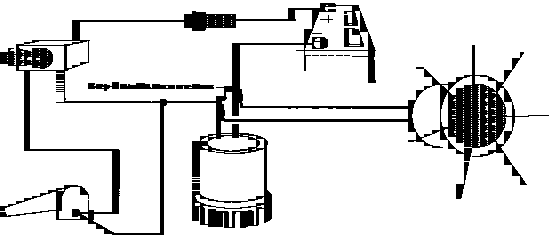
Related Articles
The truth about ceramic coatings for boats.
Our editor investigates the marketing claims of consumer-grade ceramic coatings.
Fine-Tune Your Side Scan Fishfinder
Take your side-scanning fishfinder off auto mode, and you’ll be spotting your prey from afar in no time
DIY Boat Foam Decking
Closed-cell foam flooring helps make boating more comfortable. Here’s how to install it on your vessel
Click to explore related articles
Contributor, BoatUS Magazine
Don Casey has been one of the most consulted experts on boat care and upgrades for 30 years, and is one of the BoatUS Magazine's panel of experts. He and his wife cruise aboard their 30-footer part of the year in the eastern Caribbean. His books include Don Casey's Complete Illustrated Sailboat Maintenance Manual, and the recently updated This Old Boat, the bible for do-it-yourself boaters.
BoatUS Magazine Is A Benefit Of BoatUS Membership
Membership Benefits Include:
Subscription to the print version of BoatUS Magazine
4% back on purchases from West Marine stores or online at WestMarine.com
Discounts on fuel, transient slips, repairs and more at over 1,200 businesses
Deals on cruises, charters, car rentals, hotel stays and more…
All for only $25/year!
We use cookies to enhance your visit to our website and to improve your experience. By continuing to use our website, you’re agreeing to our cookie policy.

IMAGES
VIDEO
COMMENTS
Learn the meaning of 113 dashboard symbols, warning lights and indicators for your vehicle. Find out how to react and fix the problems they indicate, from engine and transmission issues to airbags and seatbelts.
Learn how to communicate with other vessels and non-vessels using lights, shapes, and sounds at night. Find out the meaning and purpose of different colors, positions, and combinations of lights on sailing and power-driven vessels.
Learn what the 18 symbols on your car's dashboard mean and how they indicate various issues or features. From engine temperature to brake pad warning, see the images and explanations of each symbol.
Our extensive inventory includes LED indicator lights in various colors and styles, suitable for both AC and DC applications. Whether you need boat indicator lights for your dashboard, panel indicator lights for your electrical panels, or boat warning light symbols to alert you of potential issues, we have them all. Durability and Reliability
Learn the rules and reasons for sailboat navigation lights, including the red over green light configuration for sailing under sail alone. Find out when and how to use the all around white light, the steaming light and the anchor light.
Learn the meanings of the 89 most common car dashboard symbols and warning lights, from engine and emission issues to safety and comfort features. Find out how to diagnose and fix the problems indicated by these lights and avoid expensive repairs.
Learn the basic navigation light rules for sailboats and power boats, and how to identify other vessels at night. Find out when and how to display lights for different situations, such as motoring, sailing, anchoring, and inland waterways.
Learn the meaning of various car warning light symbols and indicators on your dashboard, such as engine, battery, oil, brake, and more. Find out how to fix or prevent common car problems with GOFAR's adaptor.
The horseshoe shape on your dashboard light (often with an exclamation point in the middle) indicates low tire pressure. Learn what causes low tire pressure, how to check it, and when to visit a mechanic.
Learn the rules and regulations of marine navigation lighting, the colors, positions and ranges of boat navigation lights, and the different types of lights for different situations. See diagrams and examples of boat navigation light systems and how to use them.
Find out the meaning of various symbols and lights on your Honda dashboard, from serious trouble indicators to special features and accessories. Browse nearly 80 items by color and category, and click for more details.
==Short answer sailboat navigation lights:== Sailboat navigation lights are essential safety features that help vessels communicate and avoid collisions at night. These lights, such as the red and green sidelights and white stern light, allow sailors to determine the direction and status of approaching boats. Understanding the Importance of Sailboat Navigation LightsUnderstanding the Importance of
We have a 1997 Hunter 340 with a Yanmar 3GM30F engine and are in the process of replacing the Engine Panel. The original red bulbs had long ago gone to bulb heaven and we have been a little surprised as and when they now light up. We would like any help or comments as to what activates them...
Learn how to install and test the correct navigation lights for a sailboat at night, which are required by law. A properly lit sailboat should have a green light on the starboard side, a red light on the port side, a white light aft, and a white masthead light.
body of water. A beacon that has a light attached is simply referred to as a "light"; a beacon without a light attached is called a "daybeacon." Both buoys and beacons can provide a variety of navigation information via shape, color, light, and/or audible signal. Dayboards are informational signboards. The term topmark refers to a non ...
The vast majority of boat owners don't experience any issues with LED lights onboard their boats, but having a circuit of LED lights that hums or flickers can be extremely frustrating, and tracking down the issue can often be challenging. Imtra's Technical Support Engineer, Van Noorden, walks you through some troubleshooting tips to help expedite the process of finding and resolving the ...
My astute wife noticed today that the V-drive warning light on our Walters unit was not turning off above 1200 RPM. Fluid is clean and full. ... My light came on Saturday and I've probably put 10 hours on the boat since then. I'd hate to miss out on a weekend on the water over a bad switch. The tee fitting and gauge will give me peace of mind now .
Any 12-volt panel light will work as long as it is bright enough to be seen in sunlight. Red is preferred. Locate the warning light where it will get the helmsman's attention when it comes on. On a powerboat that usually means somewhere on the instrument panel. The face of the bridge deck is often the most visible location on a sailboat.